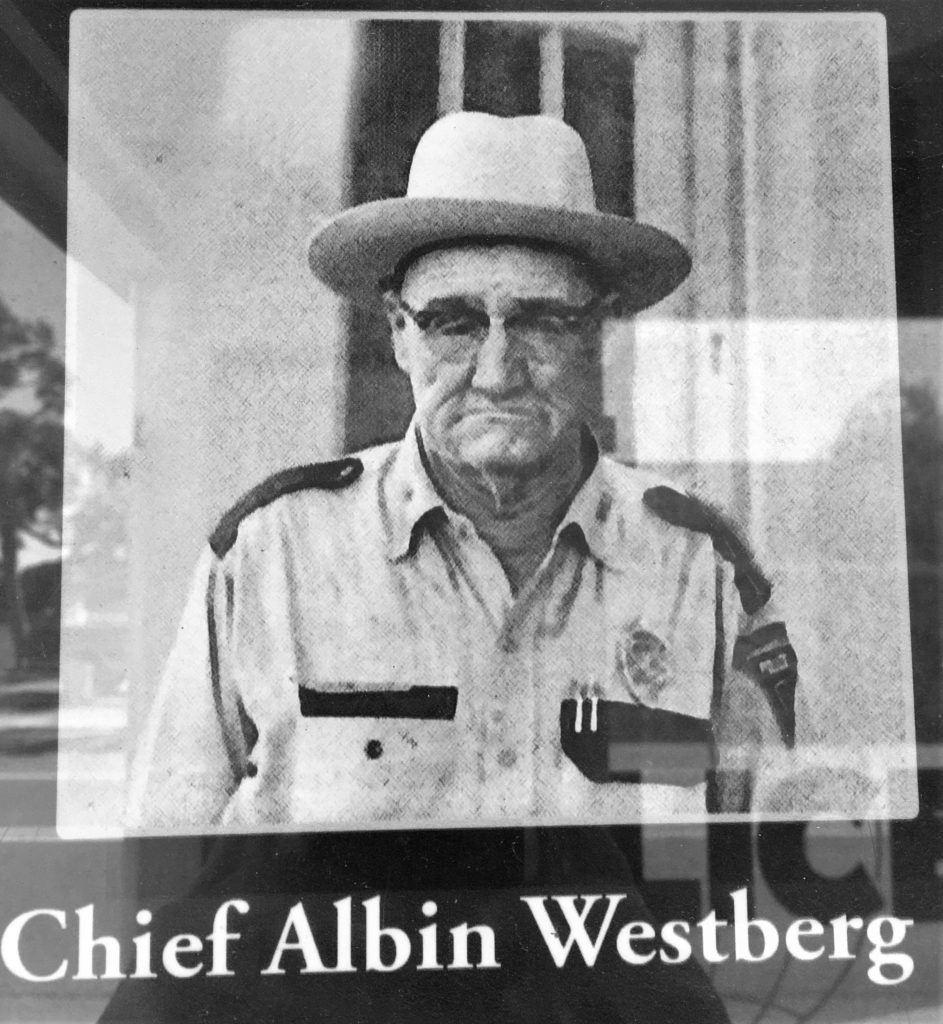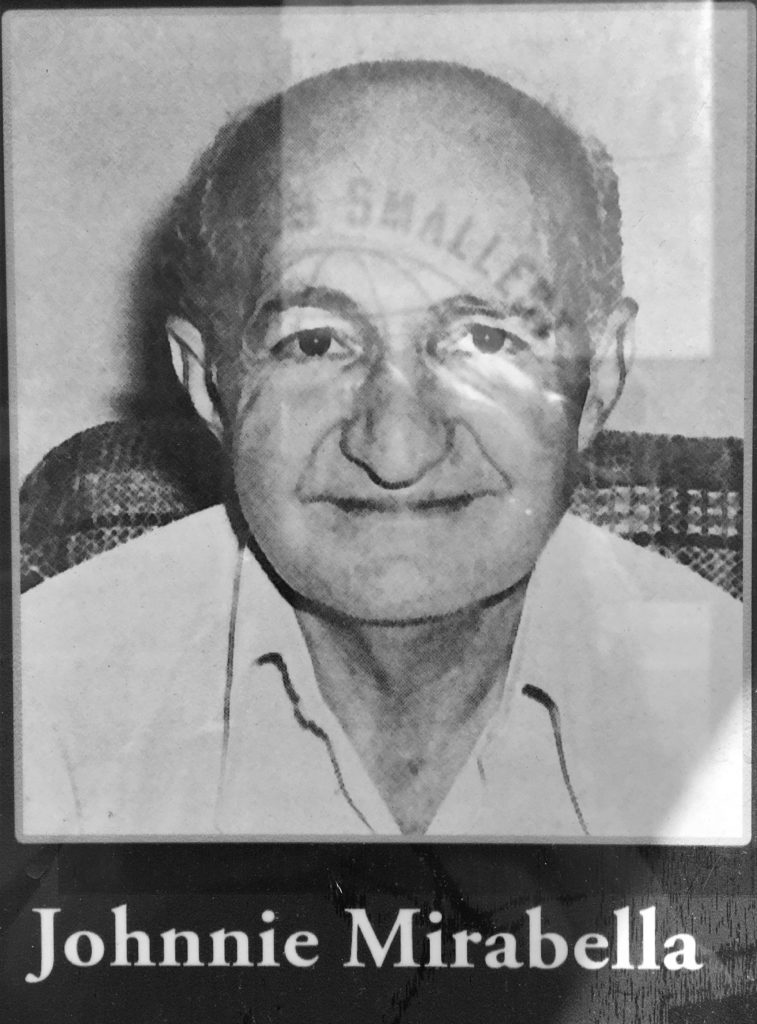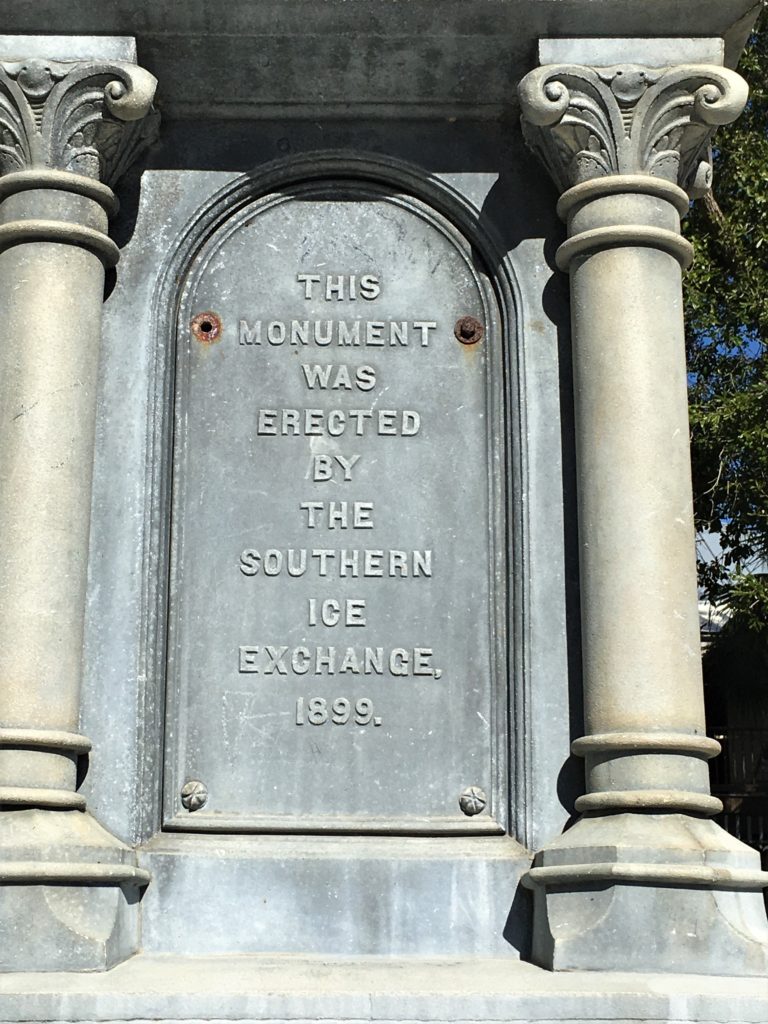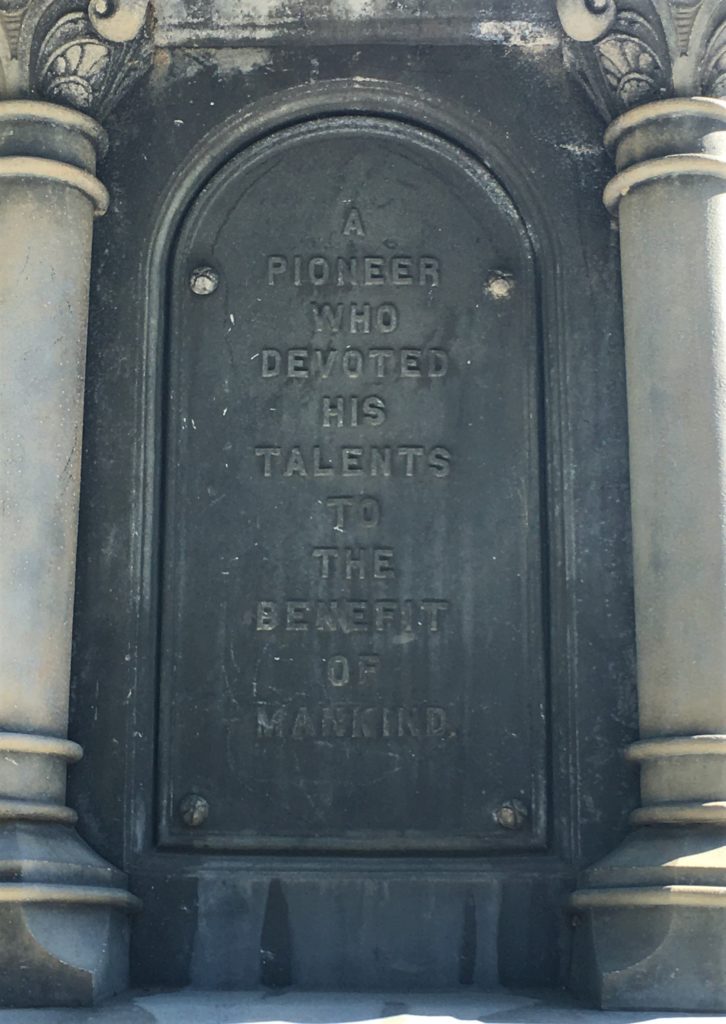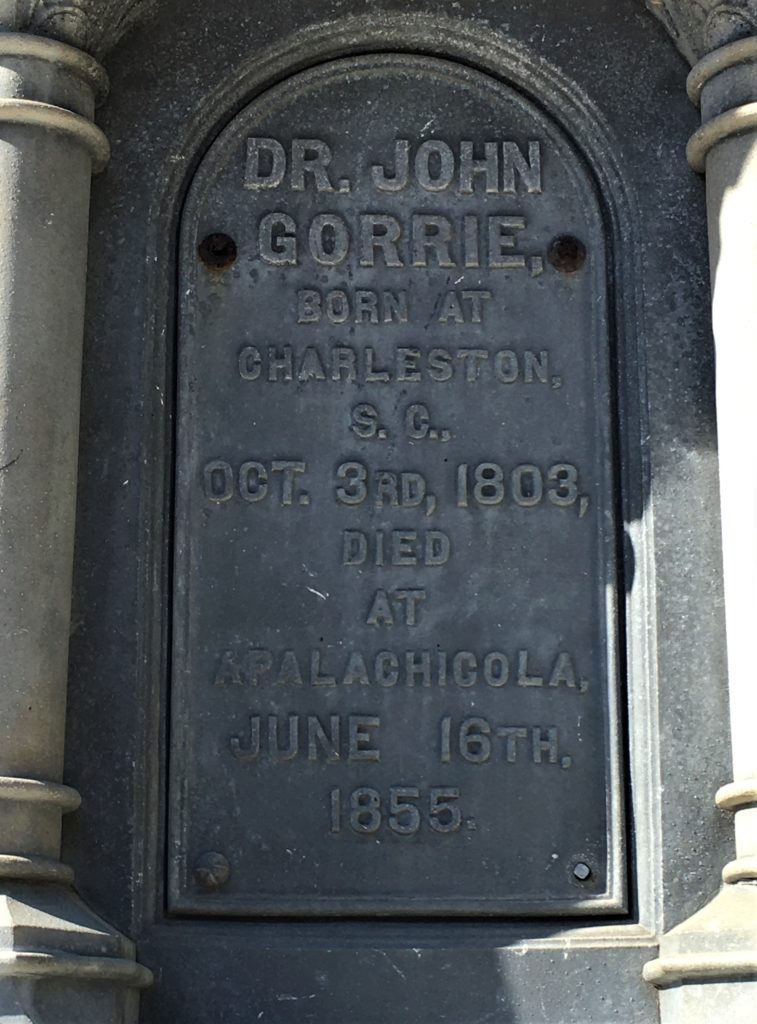St. George Island State Park, St. George Island, Florida
The waters continued to recede until the tenth month, and on the first day of the tenth month, the tops of the mountains became visible. ~ Genesis 8:5
Three more months from when Noah’s ark settled on ground, before they could see the tops of the mountains!
Have you ever heard of a website called atlasobscura.com? I discovered it by accident just after we left David’s. It’s a great site for looking up ‘off the beaten path’ kinds of things from all over the world. They not only give you a list of places to check out, they include a link to Google Maps so you can locate them, as well as well-written articles and pictures about the place. It’s how we discovered the “Man in the Sea” diving museum. There was one from our last stop that popped up, that ended up being too far away, about this town where a while back, an inordinate number of people were suspected of removing their appendages in order to collect the insurance money. There was nothing to actually see there (except maybe some hand, arm or legless people out and about), but we were going to drive by and take a picture of the town sign so we could tell you about it, for your enjoyment and ours. 😊
Today was spent in search of those places around our current area, but first, there were oysters!
The other day, we stopped in to check out the St. George lighthouse and museum. Unfortunately, at the time we were there, only the gift shop was open, but we talked to a couple of ladies working there about things on the island, and asked about a good place for oysters. Both enthusiastically named a place called Lynn’s. So that’s how we began our day out!
It wasn’t the kind of place we would’ve just stopped by. It was run-down, and not encouraging as a place to eat, but with such a recommendation, we ventured in. The server’s demeanor was underwhelming, but true to the recommendation, the food was phenomenal! Always ask the locals if you can!
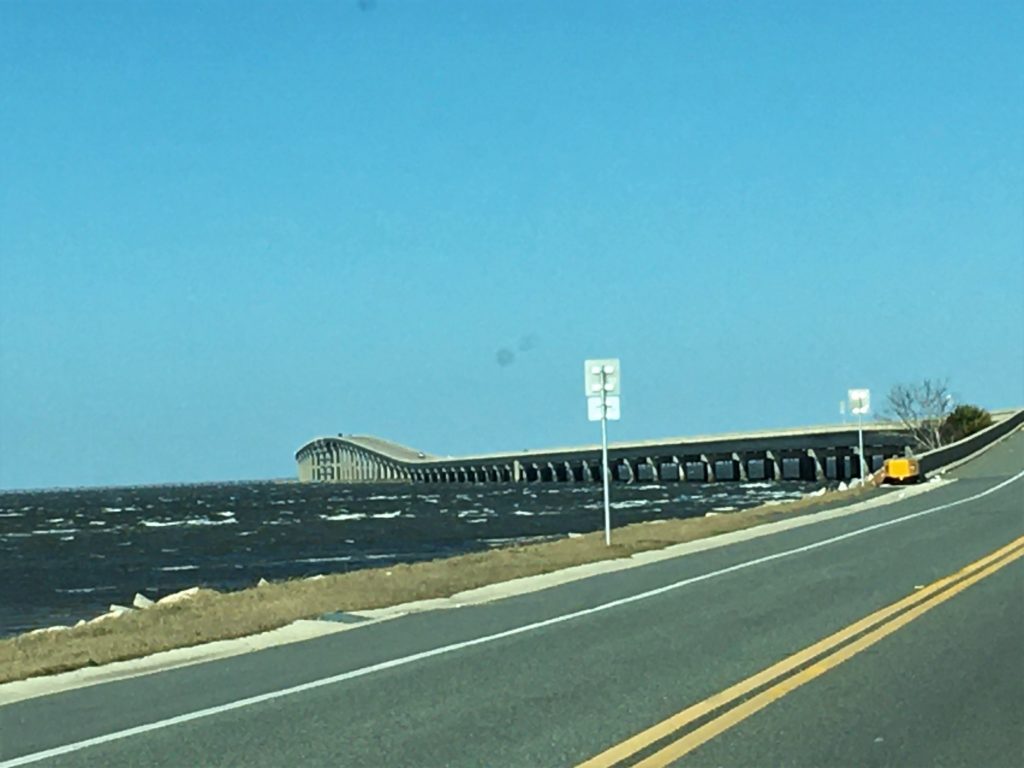
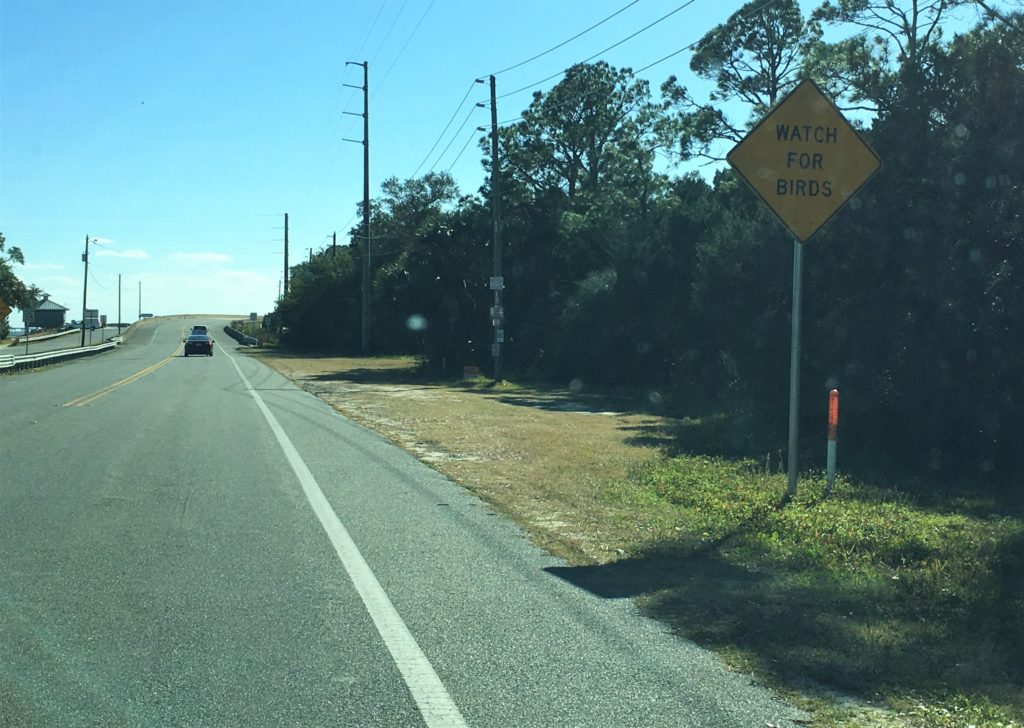
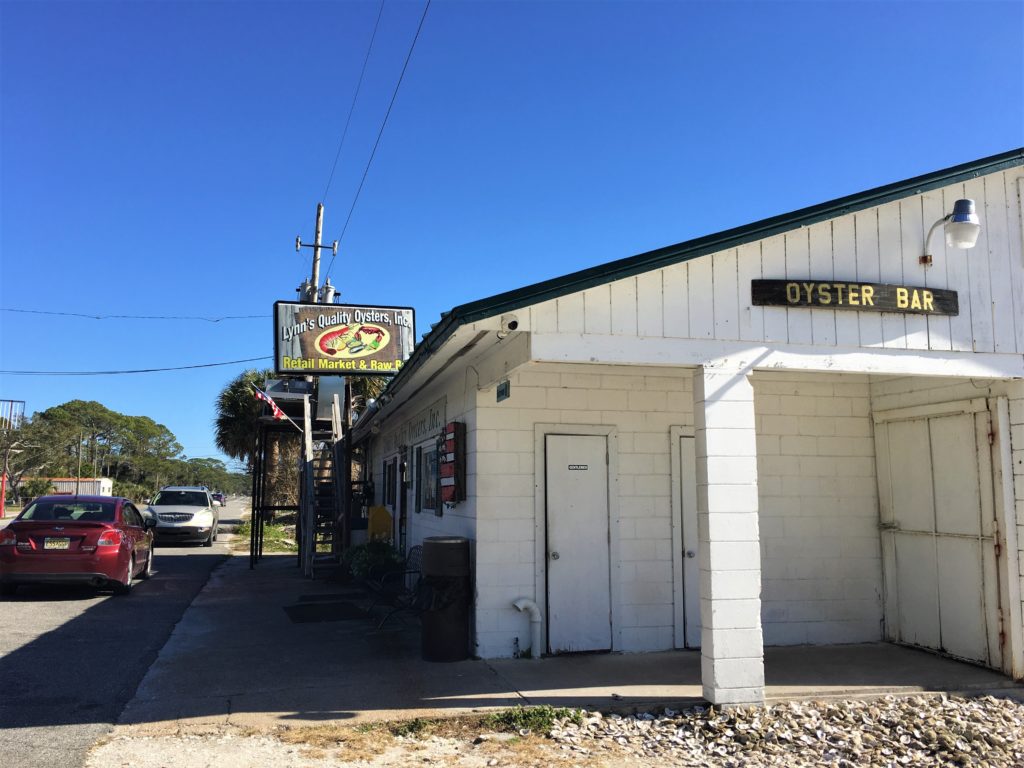
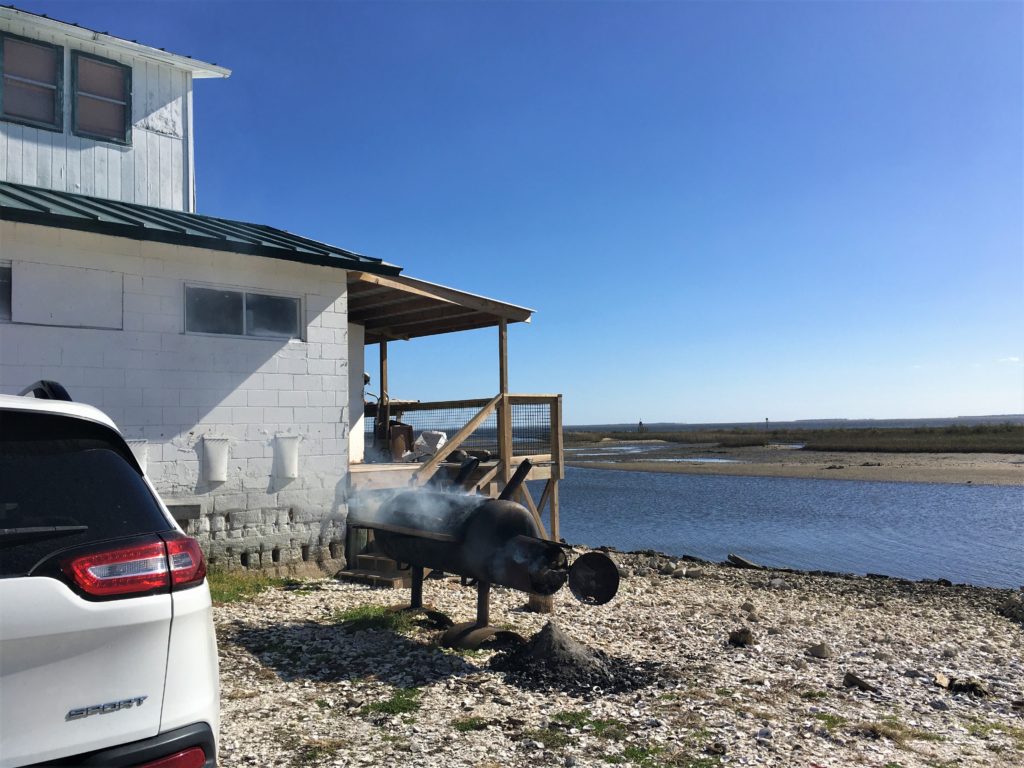

We didn’t ask for the extra spoon, so it was nice they thought of it. : )
It was extremely delicious!
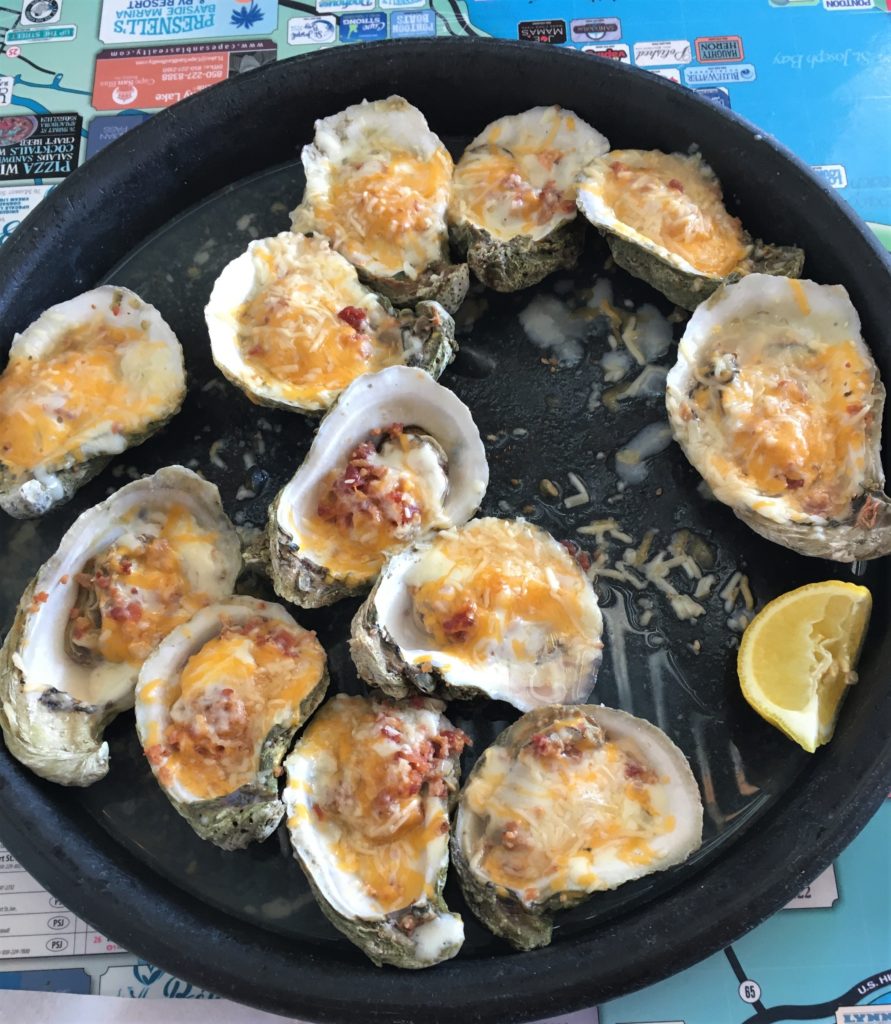
Our bellies full and our mouths reeling with joy, we set out to cover our list of four additional stops.
Up first, the Carrabelle Bottle House. I think I’ll just let atlasobscura.com describe these places.
LEON WEISENER—FORMER ART PROFESSOR AND set painter—isn’t sure why he decided to make a bottle house.
After retiring to a small Florida town, Weisener did construction projects as a way to relax. He began by restoring and adding onto his historic house. When that was finished, construction of the bottle house came next. Designed in a pentagon shape, it was built with over 6,000 glass bottles.
The house is small, but full-sized. Its walls are 12 feet long and 8 feet high, with a roof that peaks at 14 feet tall. Antique bottles found on the property are displayed along the tops of the walls. Wide mouth jars spaced out horizontally along the walls can be used for storing or holding items. Inserts of German handmade stained glass and colorful round lenses from school buses and fire trucks are used for added light and color. Mannequin hands, ostrich eggs, antique hay rake tines, copper pipes and wooden balls can be found decorating the outside of the house.
Weisener continues to build, so a visit to his yard involves much more than just the bottle house. There’s a 15-foot-tall lighthouse, with a working revolving light at the top. A giant static geodesic sphere, made of layers of spheres tethered together, is described by its designer as an abstract self-portrait of his life. A smaller, 8-foot-wide kinetic geodesic sphere has colored glass panels and mirrors that reflect light as it rotates on its stand. Inside the house are several pieces of wine cork-covered furniture.
Some projects haven’t gone according to plan: a large twisting bottle tower with a domed top of glass shards has begun to crumble from the bottom and a 16-foot-tall bottle arch fell over shortly after it was completed. Even so, Weisener continues to create and add to the displays, and to share his art with visitors.
Know Before You Go
Visitors are always welcome. If the gate is unlocked, feel free to explore the yard and take a look inside the bottle house. Just be sure to keep the gate closed so that the dogs don’t get out. If you’re lucky, Leon will be home. He enjoys meeting visitors, talking about his background and projects, and answering questions. Also, don’t discount a visit at night. That’s when lights inside the house and on the other art pieces are turned on, and the myriad of colors are illuminated.
Talk about obscure, it was even difficult for our gps to find the place! It was tucked back in the middle of a neighborhood, off the beaten path. As you can see, unfortunately, the place was closed. ☹ But we were still able to snap a couple of pictures and imagine what it looked like up close – – and lit up at night!
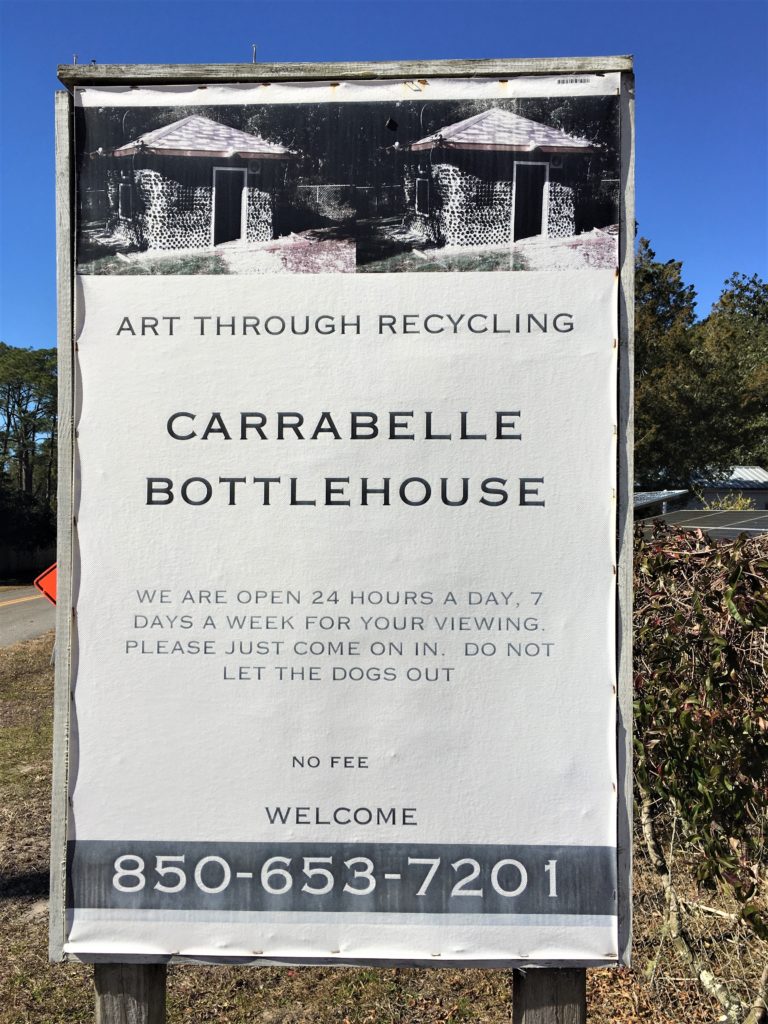
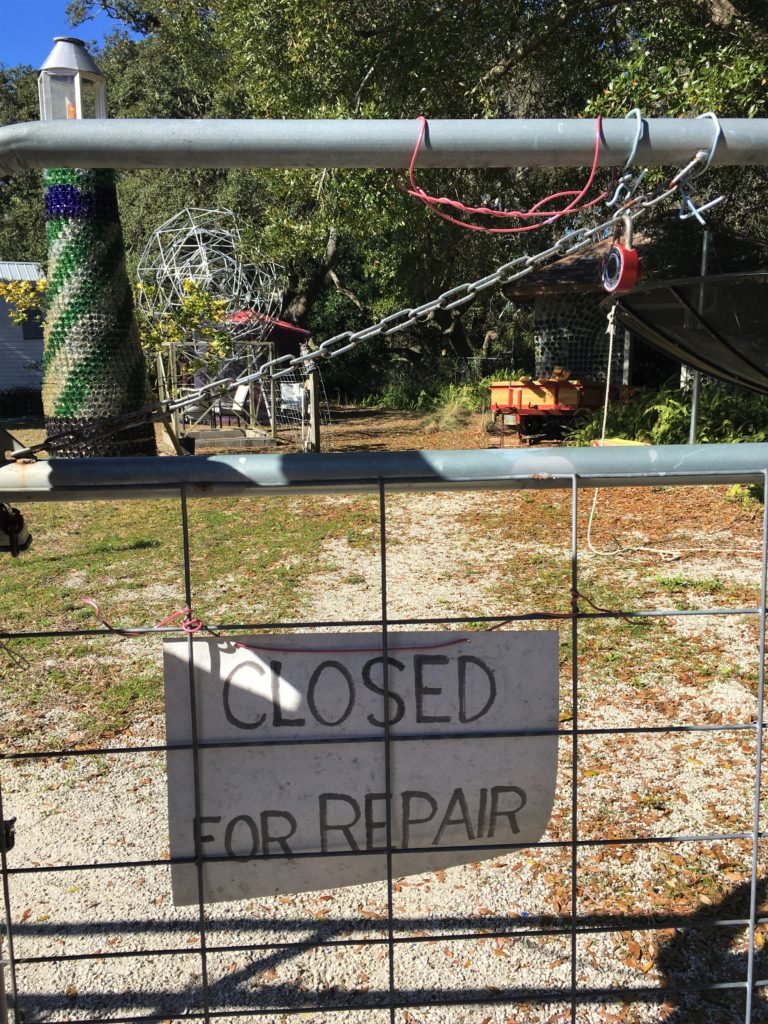
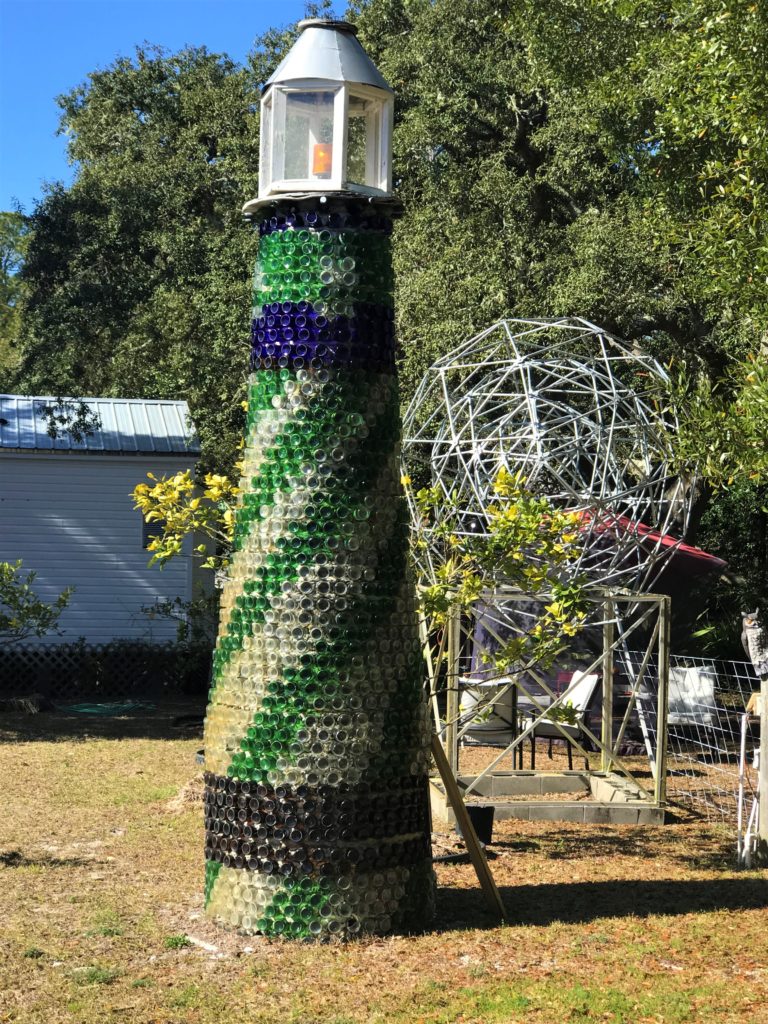
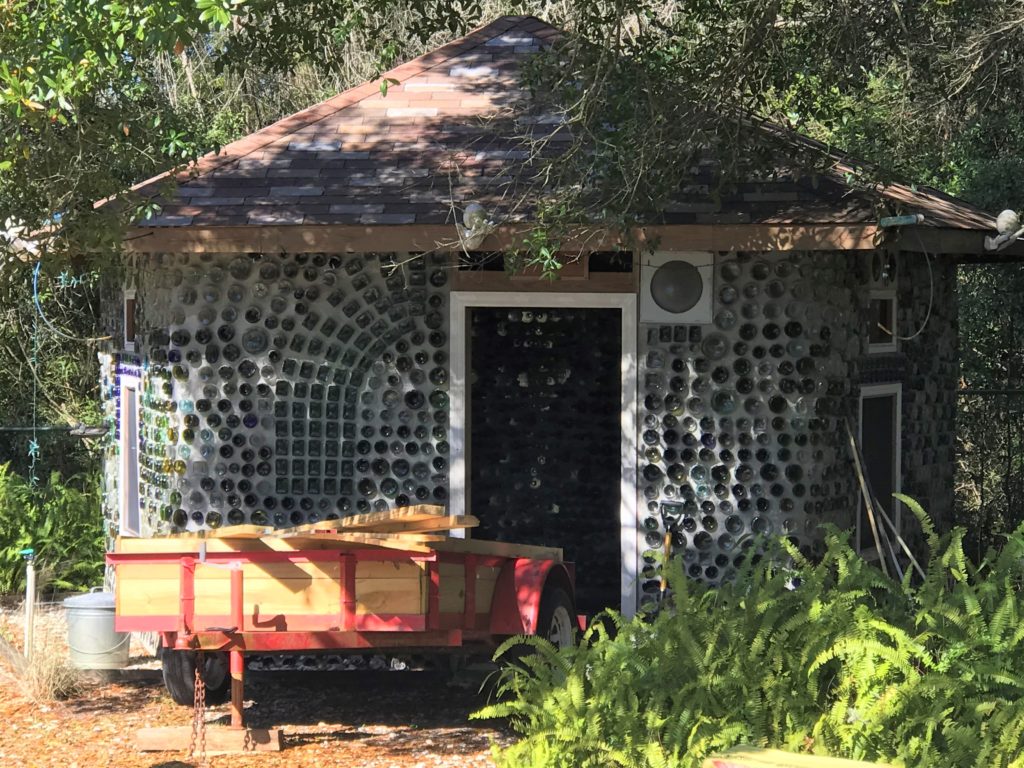
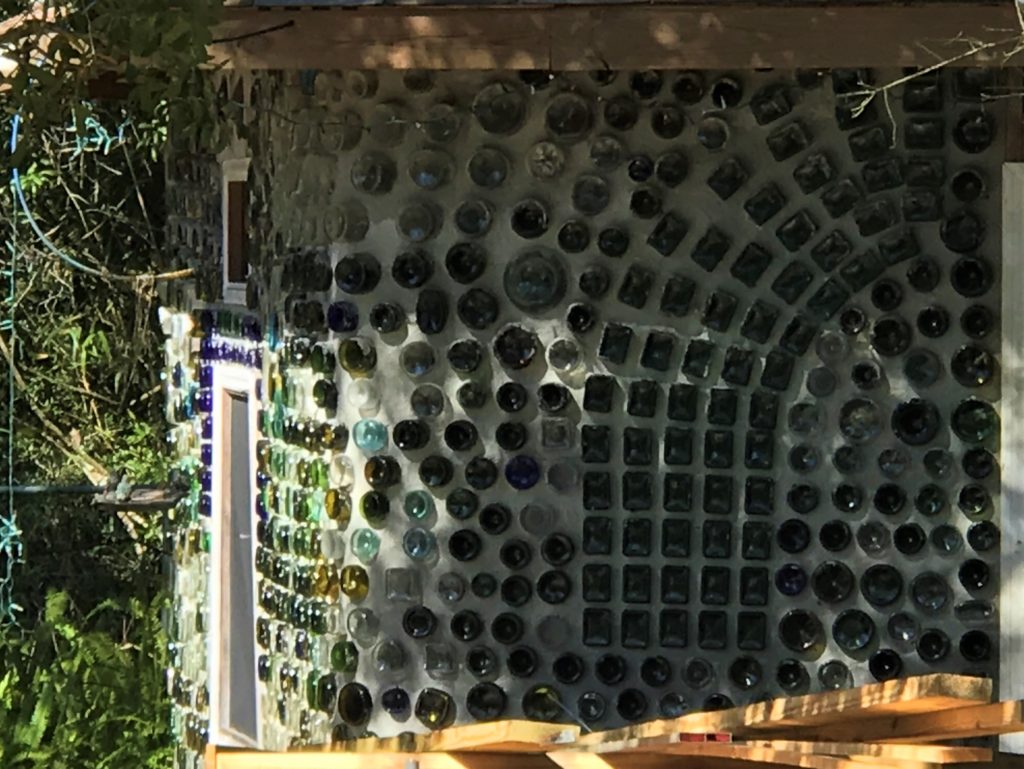
Close by (once we returned to the main drag), we found the world’s smallest police station! What a great story! And how wonderful that the city chooses to keep it on their corner!
THIS PHONE BOOTH IN CARABELLE, Florida is alleged to be the “World’s Smallest Police Station,” and who are we to disagree?
Its history belongs to law enforcement through and through. Built in 1963, it was originally a police phone box before apparently performing so well that it was promoted to a full “station.” The tiny office has earned a fair amount of fame for its oddity, appearing on several television shows including “Ripley’s Believe It or Not!”
But of course, that amount of fame comes with extra attention from the locals – and not all of it positive. The location has been vandalized several times throughout the years, from benign pranks such as the phone being regularly removed to more serious issues like gunfire directed at the booth.
In fact, the booth has met with such misfortune that it’s been replaced entirely more than once. But the original has been preserved by the local Chamber Office, where it sits on display. The new booth is more of a museum than a functioning office, if you can believe it, and it displays a thorough exhibit of its history.
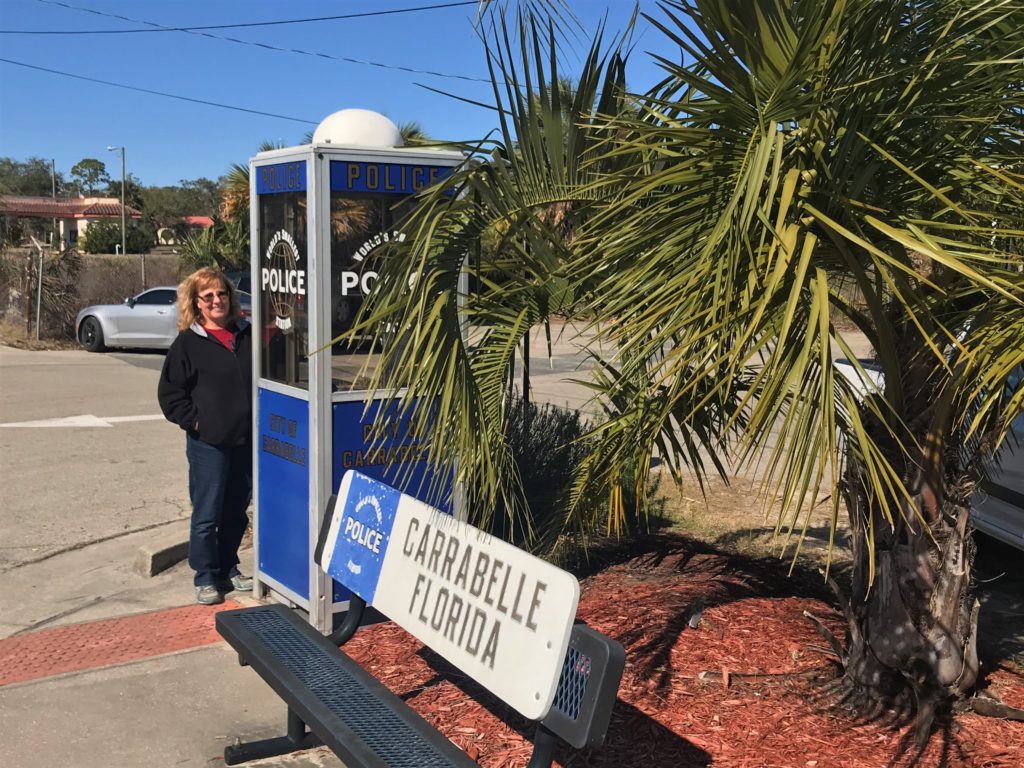
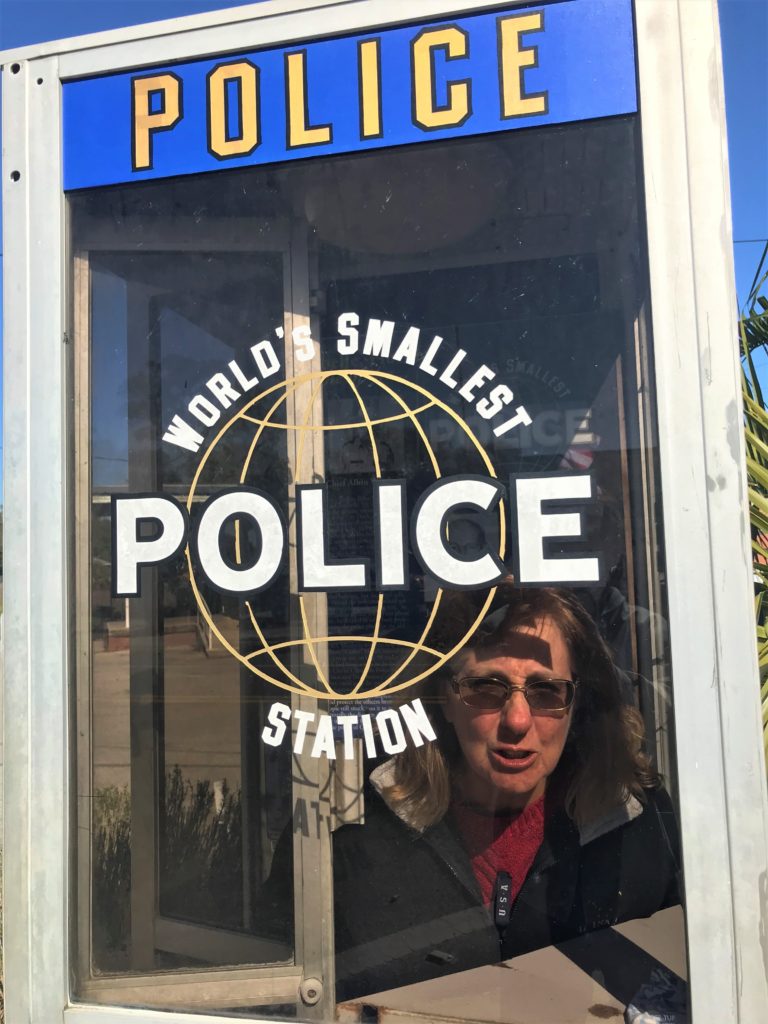
There was a nice history displayed inside the booth, but there was so much glare, our phones wouldn’t take good pictures. Fortunately, we spotted a hand-out at our next stop that had it all typed out for us. 😊 You should take the time to read it. We found it really fun and interesting!
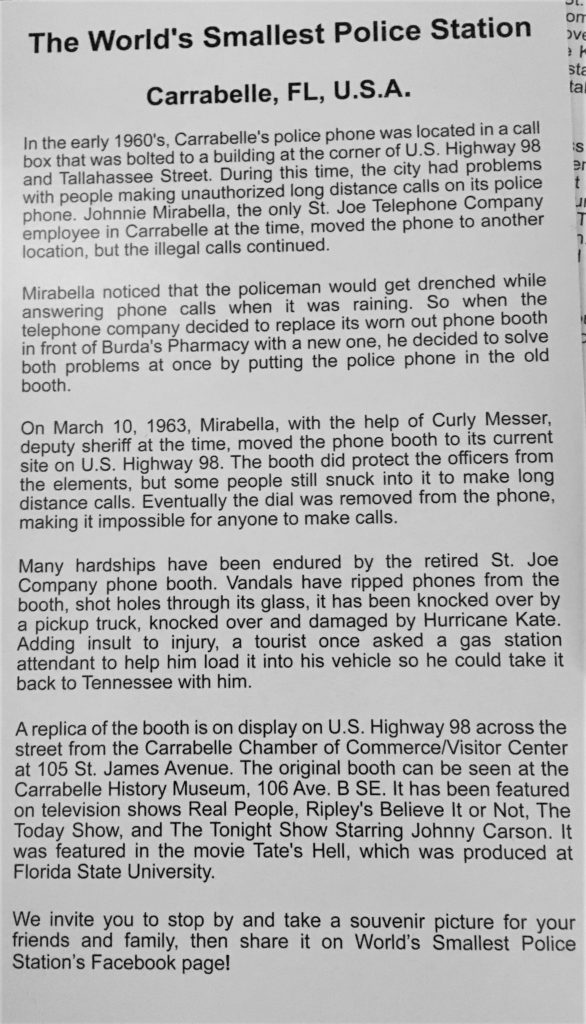
We managed these pictures of the three men mentioned in the story – –
We walked the streets for a bit, and there was also a very small park in the area.
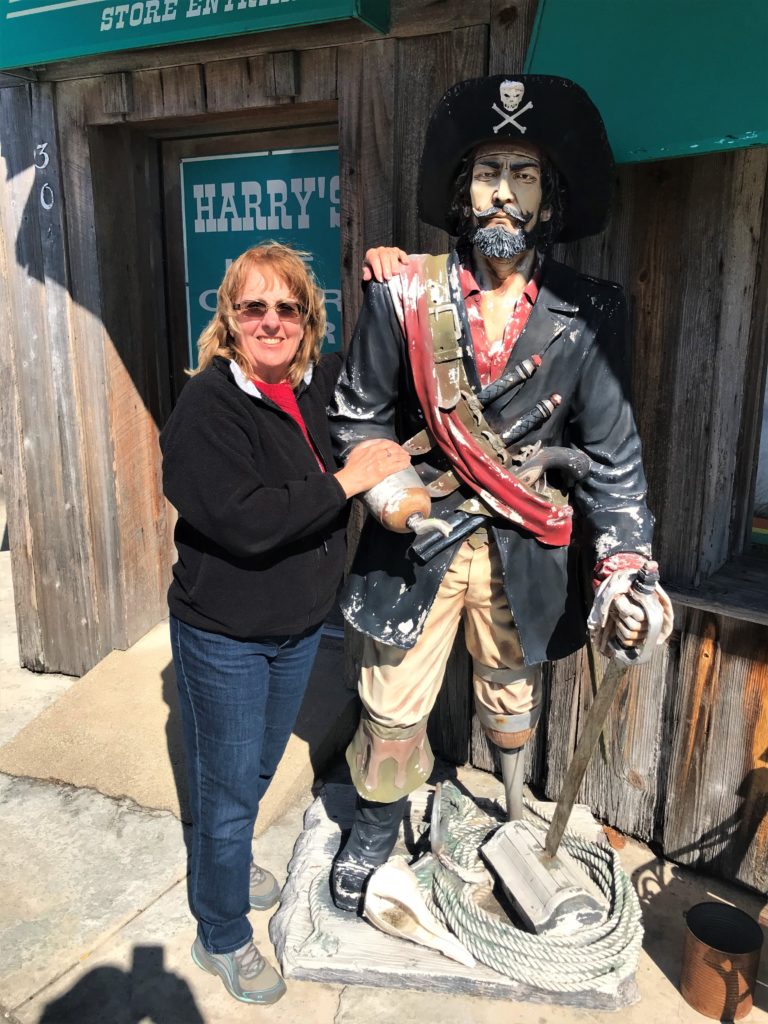
My hair really did look nice when we left this morning.
The high wind really does a number on it for pictures!
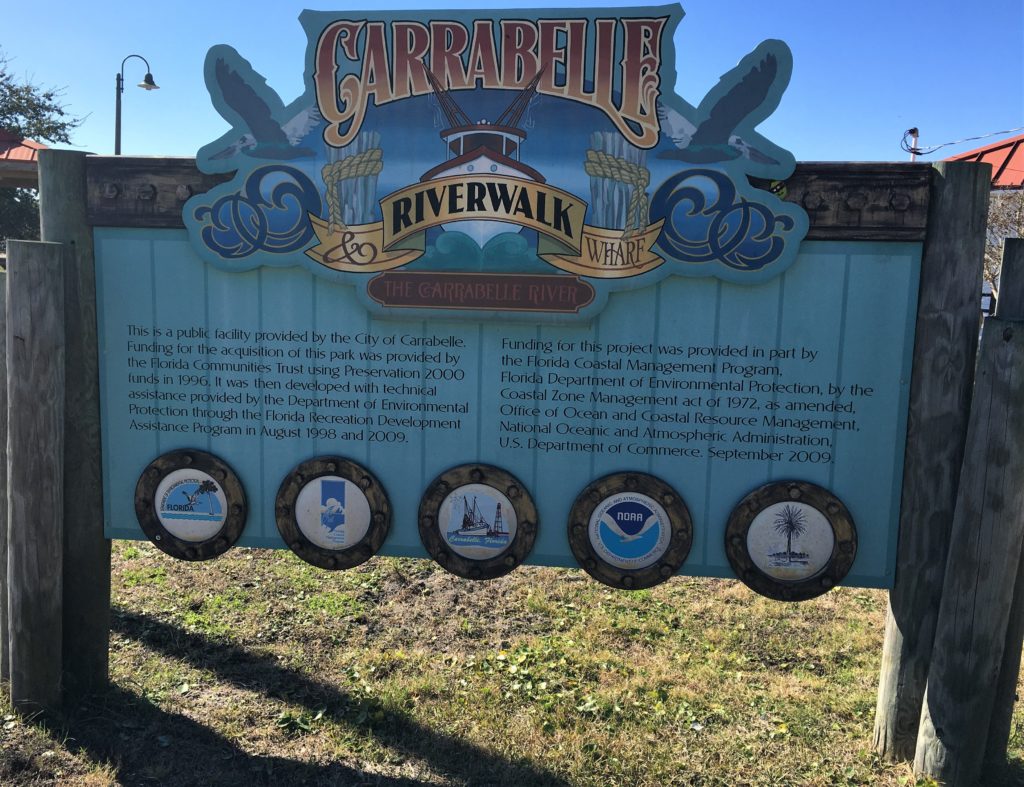
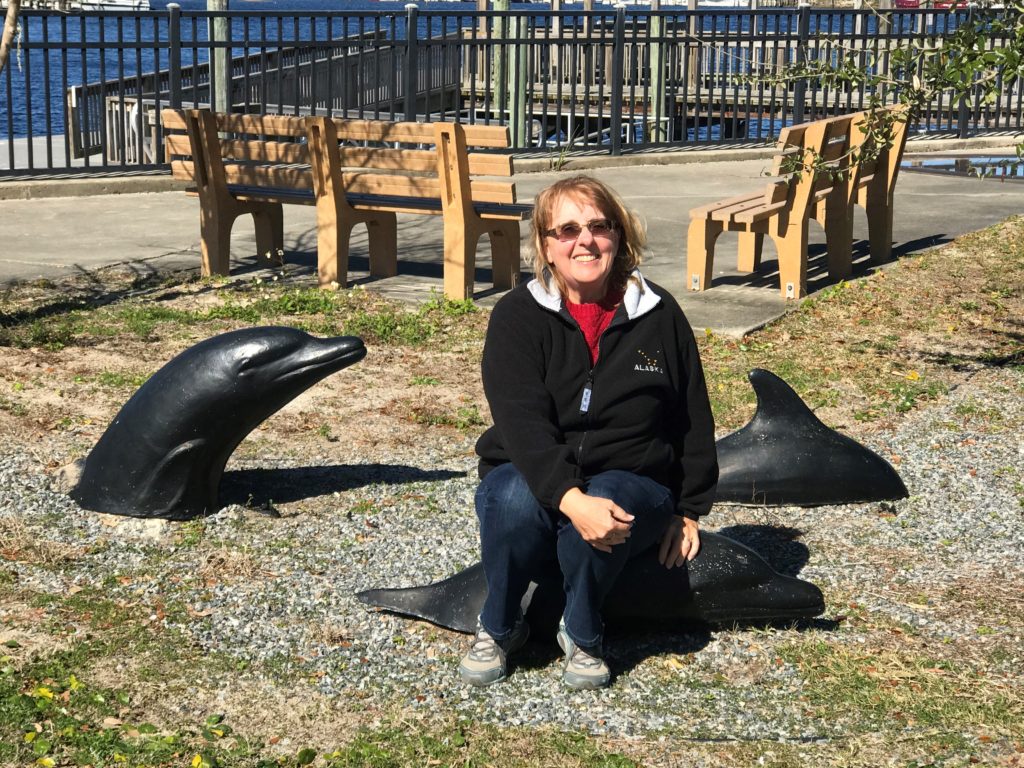
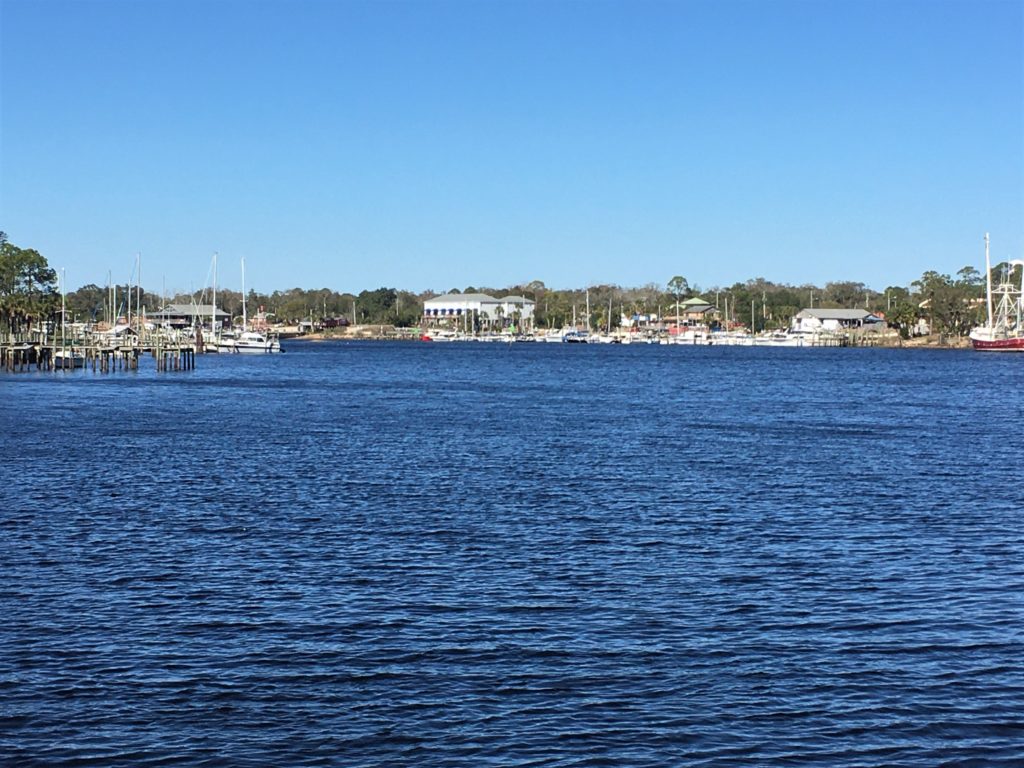
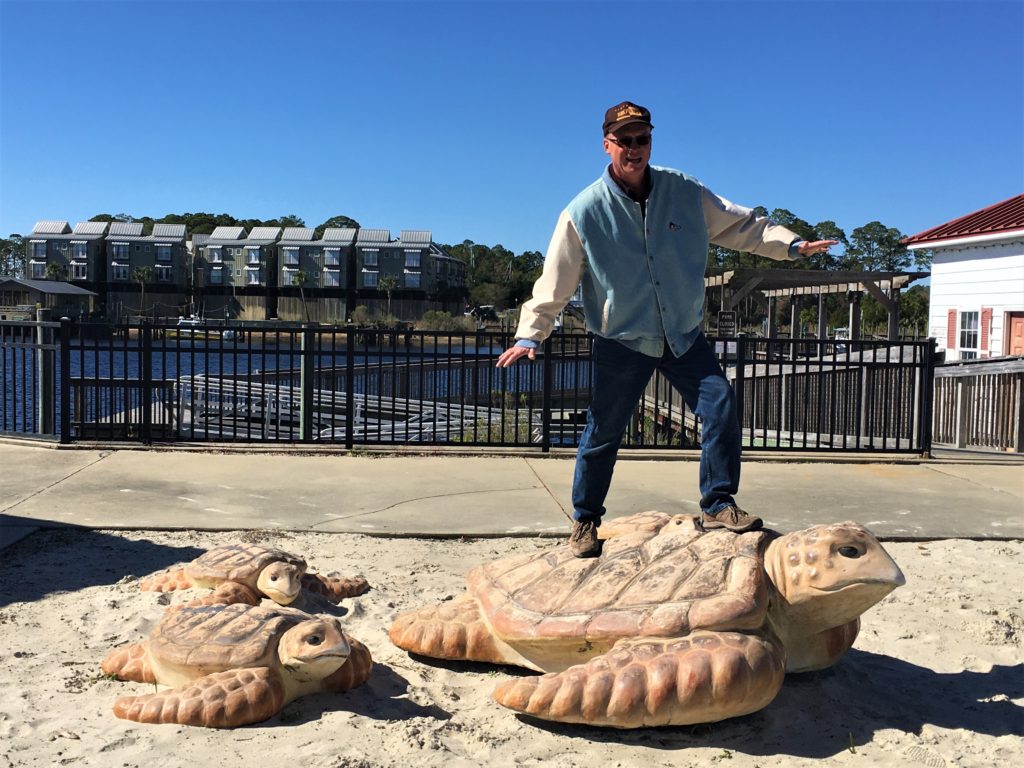
On our way out of town, we stopped by a fish market to pick up dinner. There were quite a few choices for fresh seafood, and we ultimately settled on shrimp and red snapper.
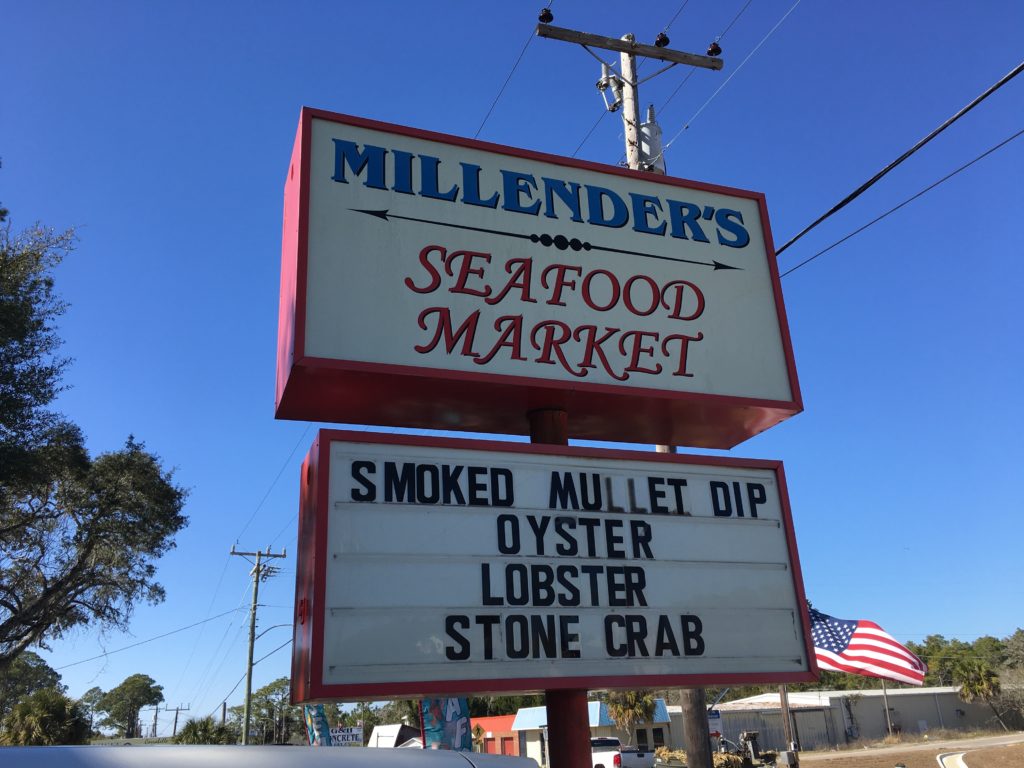
Up the road, in the direction of home, is the Crooked River Lighthouse. The blurb on atlasobscura calls their information a “stub”, meaning they’d like more information and pictures. I don’t know that I have more information for them, but we’ll see.
THE CROOKED RIVER LIGHTHOUSE IS composed of steel and was built in 1895. It was constructed as a replacement to the lighthouse on Dog Island after it was destroyed by a hurricane. It was decided that it was much safer to build the replacement lighthouse on the mainland instead of on the vulnerable island.
We were pleased to find the small museum open, and the woman working there offered to play a video about the history for us, which is always good. She also asked us to sign their visitor book, which I did and included atlasobscura as the location where we heard about them. Who knows? Maybe someone from the museum will check it out and send more info to them. That would certainly be better than anything we could contribute.
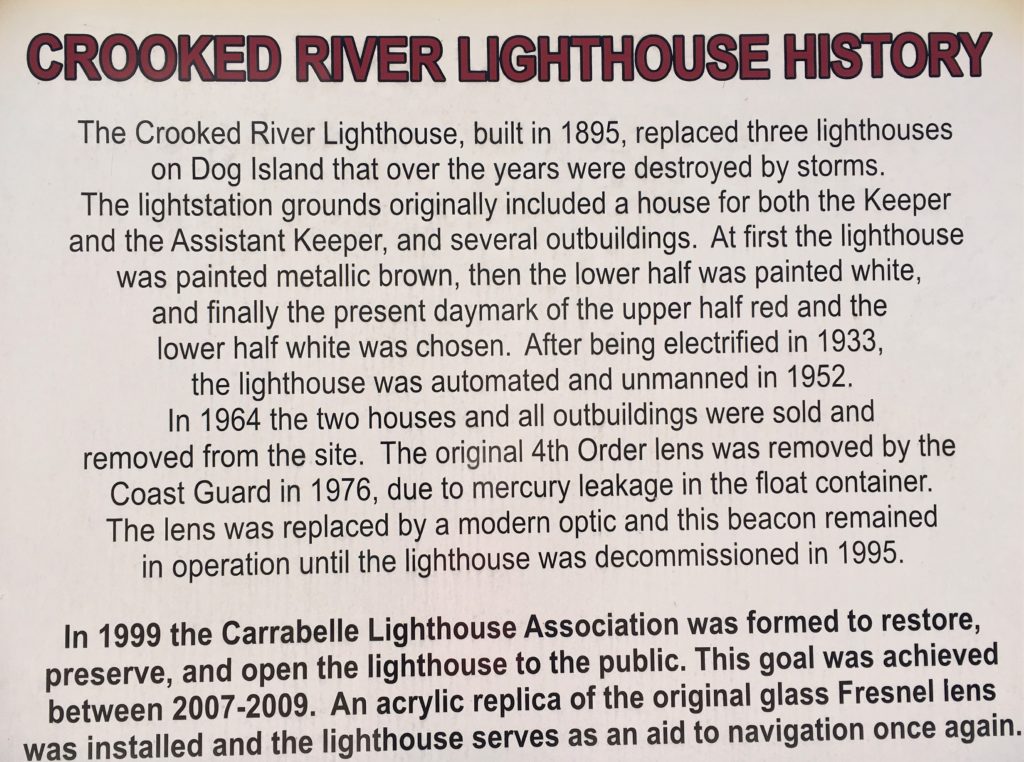

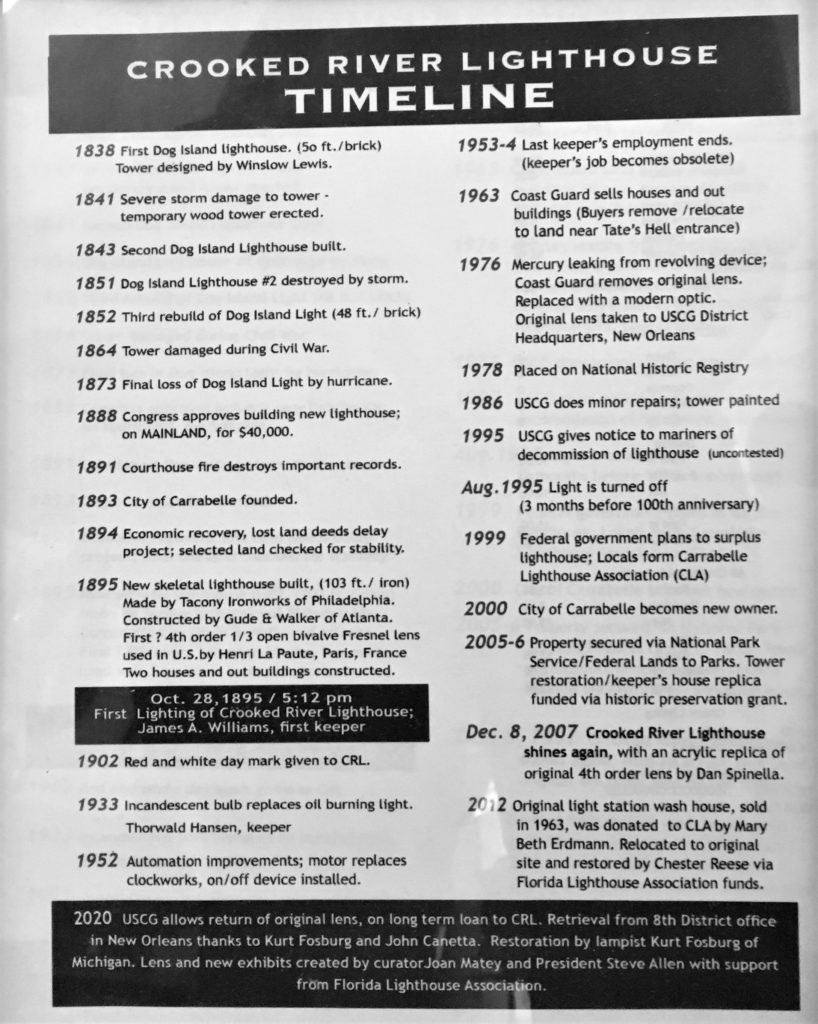
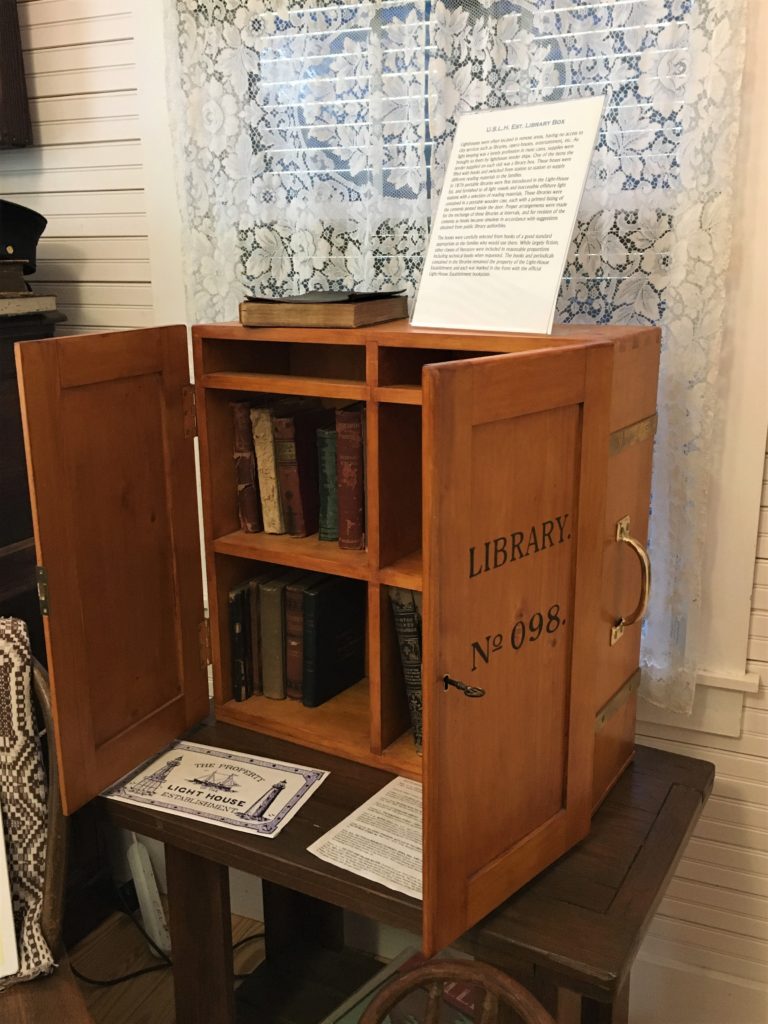

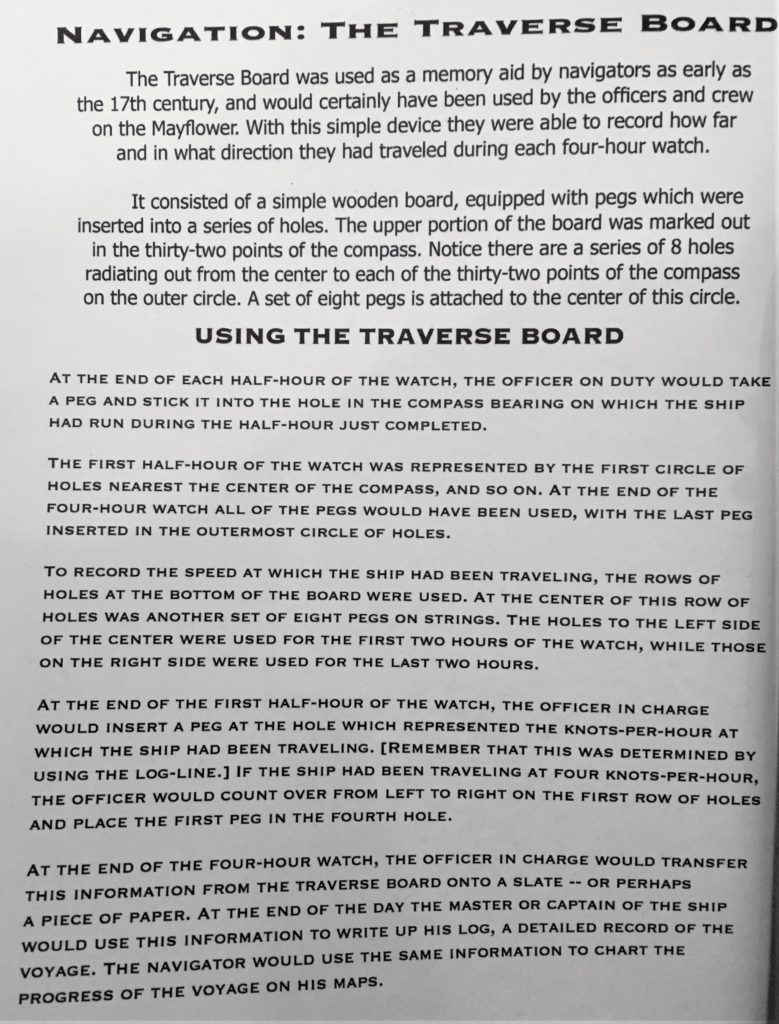
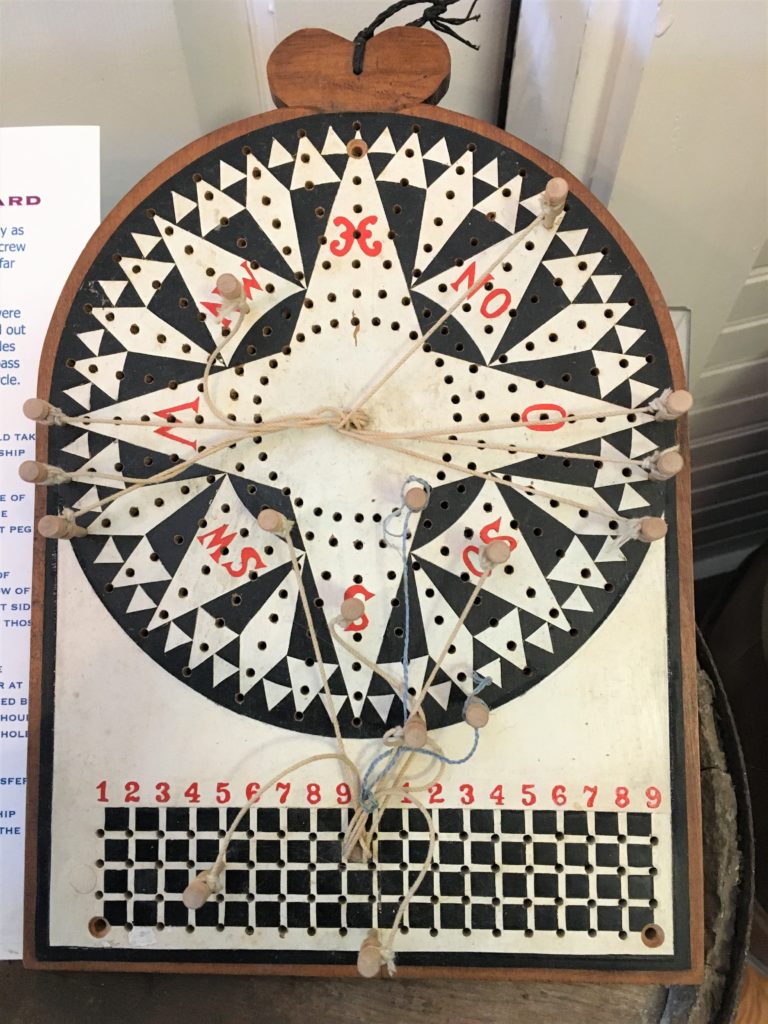
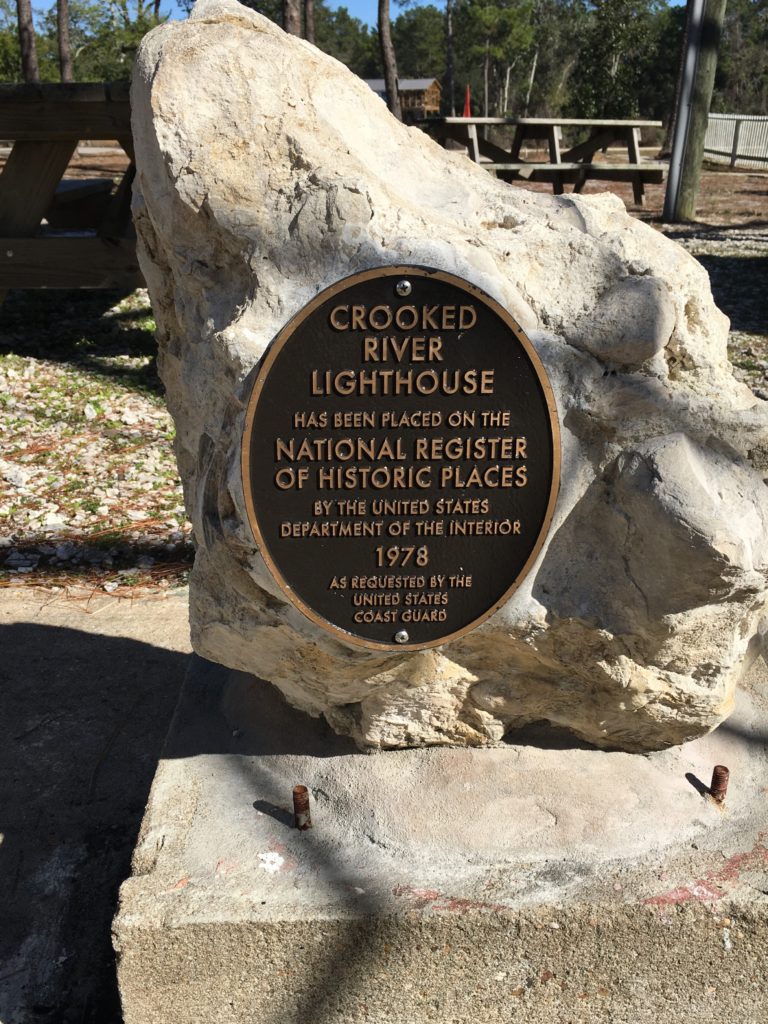
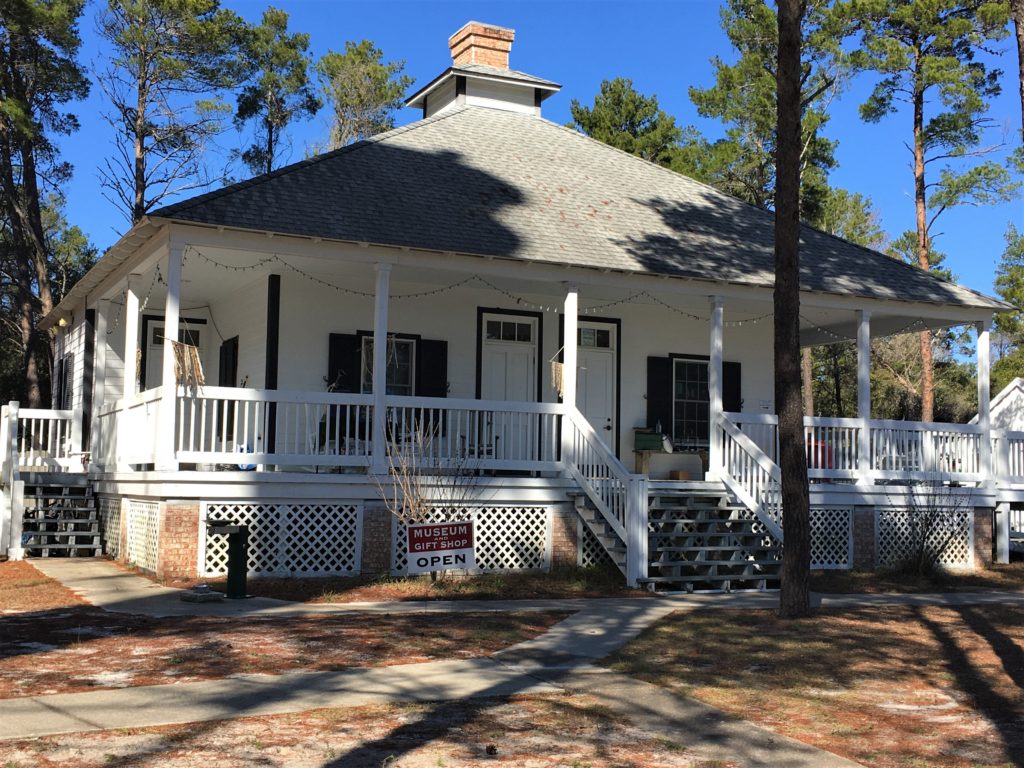
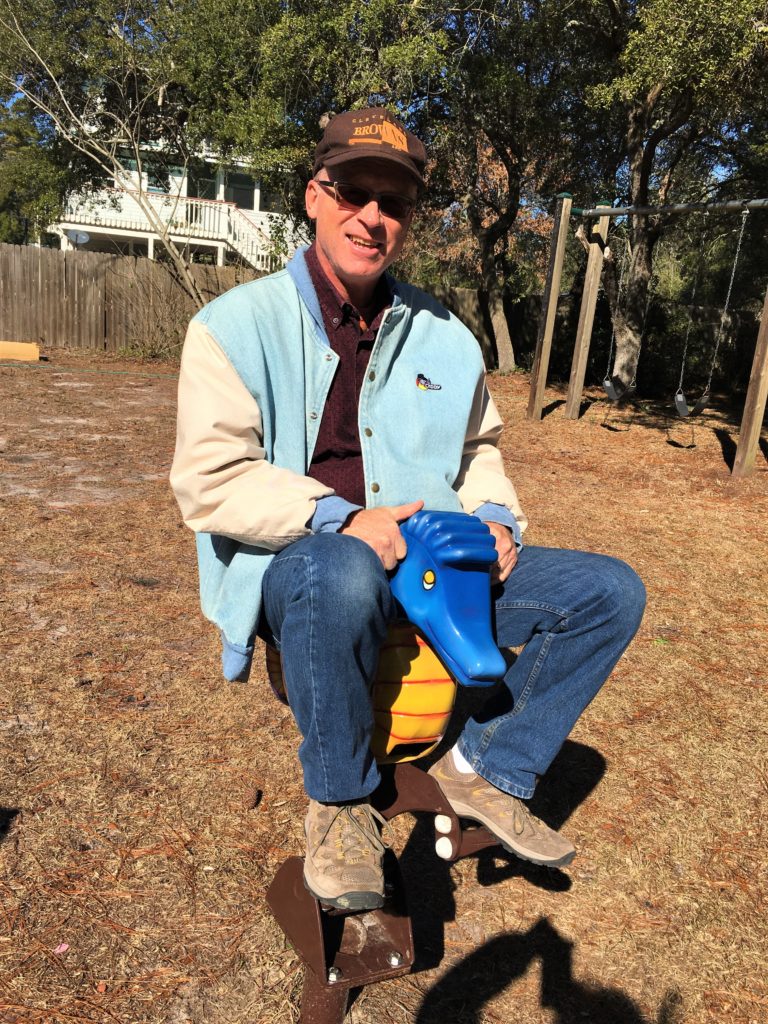
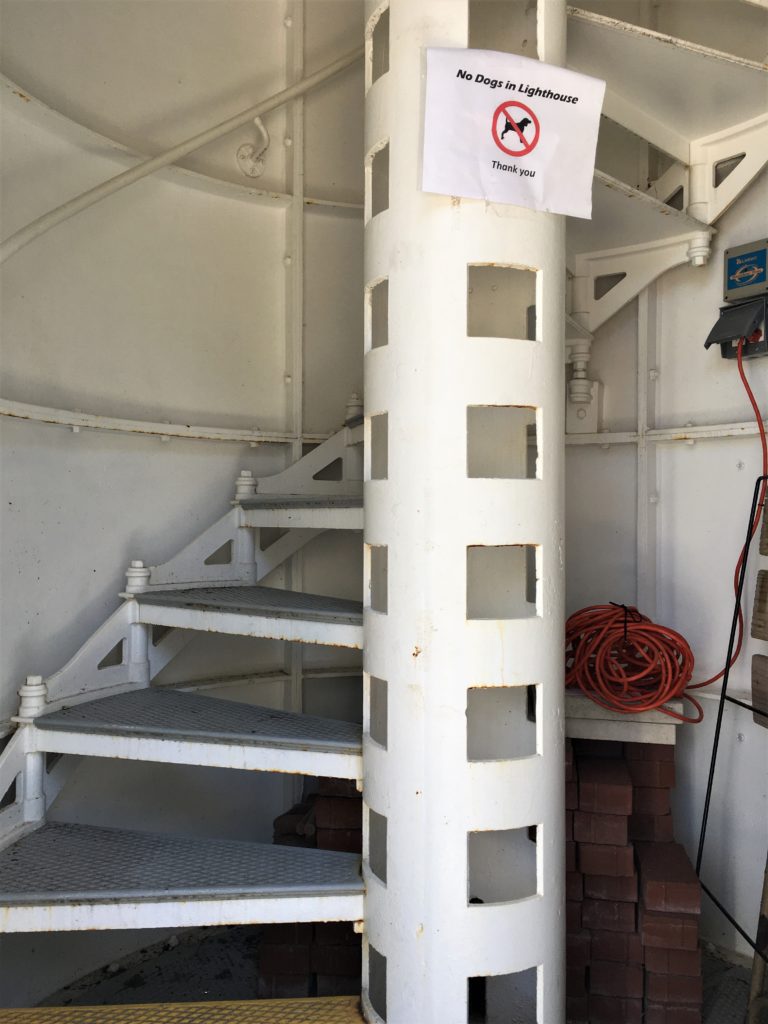
But that tube with the square holes?
That’s where the chains and weights hung that powered the motor to turn the lens. Kind of like a grandfather clock. The lightkeeper used the chains to pull the weights back to the top each day.
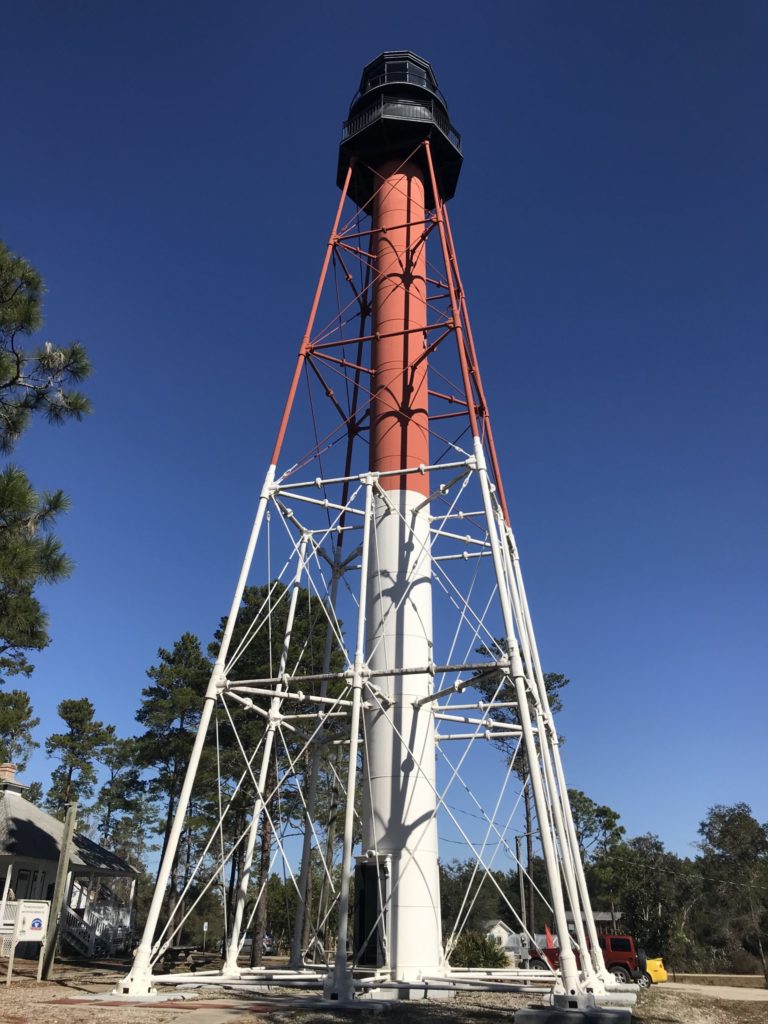
Sadly, our final stop was also closed. This time due to Covid. The John Gorrie Ice Machine Museum is actually a Florida State Park. It’s kinda small, but most of us should probably consider this practically hallowed ground, since he’s considered to be the father of air conditioning.
IN 1833, JOHN GORRIE WAS a young physician looking for a place to practice. He found it in the port city of Apalachicola, Florida. There, although he was a tireless resident at two hospitals, he found time to serve (at various times) as postmaster, bank director, councilman, city treasurer, and even mayor. But it’s his research into tropical diseases and treatments for yellow fever that had the most lasting effect, on both locals and far beyond.
Dr. John Gorrie is remembered as the father of air conditioning.
Gorrie’s hypothesis was that “bad air” was the cause of many of his patients’ diseases. His innovative treatment required the cooling of sickrooms, which he achieved by placing blocks of ice in basins suspended from the ceiling. Since ice had to be transported by boat from northern lakes, and the treatment needed large quantities of ice, Gorrie began experimenting with making it artificially. In 1845, he gave up his medical practice to focus on inventions, and in 1851 was granted the first U.S. patent for mechanical refrigeration.
Unfortunately, after a financial partner died, Gorrie was unable to find anyone else to back his machine, and he died at the age of 52, secluded and nearly penniless. Though there are disagreements over who invented the air conditioner, it is widely agreed that Gorrie’s ice machine, and his patent for mechanical refrigeration, were major steps toward its development.
Originally buried in Magnolia Cemetery, after breaking ground for a museum in his honor, Gorrie’s body was moved and the John Gorrie Museum State Park was dedicated in 1958. It is across the street from the new gravesite and heritage marker in Gorrie Square, and also near a large monument that tells his story.
His influence and achievements meant so much to Floridians, in 1914 he was chosen to represent the state in the National Statuary Hall Collection at the U.S. Capitol. You can still see him on the tour today, where it’s nice and cool.
Know Before You Go
Admission to the museum is $2 for those over the age of 6. Open 9-5 every day except Tuesday and Wednesday.


The replica is displayed inside the museum.
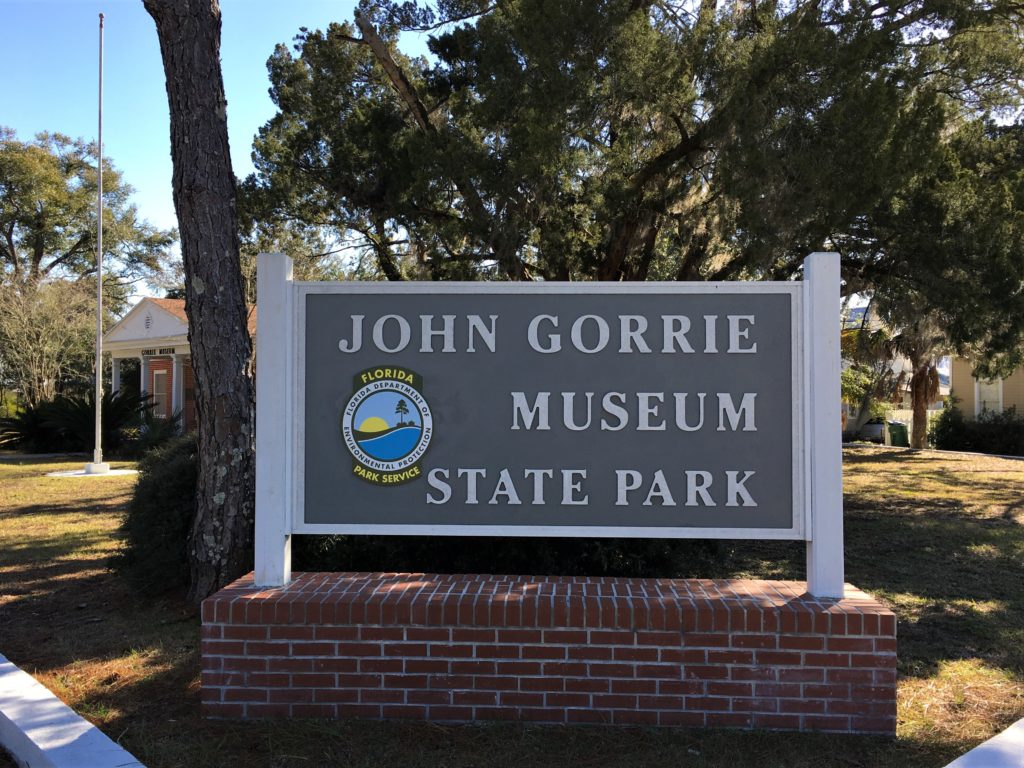
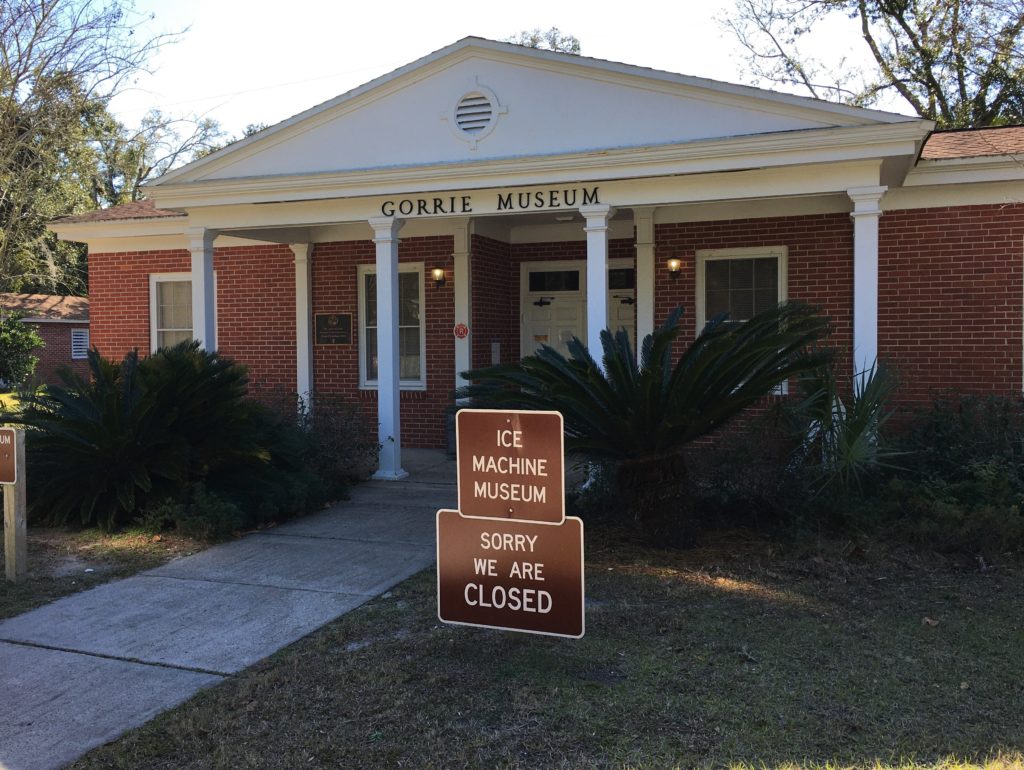
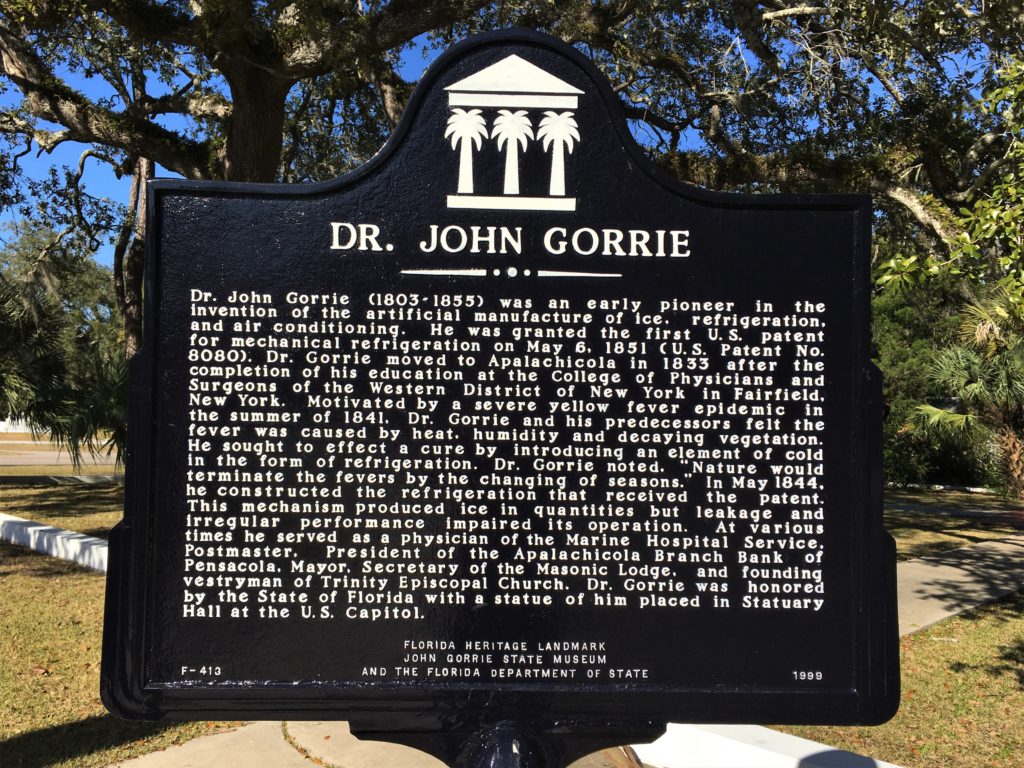

I found the following article on a Masonry website explaining the date on Dr. Gorrie’s tombstone:
What Year is it? A.D., A.L., A.M., or A.O.
There is confusion from time to time about the year designation A.L. on a Masonic document. I located the following references in A Comprehensive Dictionary of Freemasonry by Ernest Beha, New York, New York: Citadel Press, 1963. Anno Domini (A.D.) This is the Latin for “In the Year of Our Lord”. It is also called the Vulgar Era, referring to its common or general use, a term which perhaps will fall into disuse eventually. The Masonic year, or “The Year of Light” is 4,000 years ahead of Anno Domini. (See Anno Lucis.) Anno Lucis (A.L.) This is Latin for “In the Year of Light”. The term is frequently used in Masonic procedure, and expresses a year that is 4,000 beyond Anno Domini (“The year of Our Lord”). There is a reason for this, of course. The date of the creation of the world is generally assumed to be 4,000 years before the birth of Our Lord, and the creation of the world saw the beginning of Light. (“Let there be Light. And there was Light.”) Dr. James Anderson, in his 1723 “Constitutions”, refers to the 4,000 year-advanced “Anno Lucis” as “The Year of Masonry” and the idea was adopted. That is why a Mason’s Grand Lodge registration certificate has two dates recorded thereon, the Year of Light (or the Year of Masonry) and the accepted everyday calendar year (or the “Year of Our Lord”). So, therefore, if a person were made a Mason in 1955, this year (and the precise date) would appear on it, as well as the Anno Lucis date, which would be 5955 and in Iowa the date on his 50 year certificate if he lost no time would be 6005. (See below.) Anno Mundi (A.M.) This is the Latin for “In the year of the World”. Used in some Degrees practiced abroad. Roughly calculated it is 3,760 years before Anno Domini. (See Anno Lucis.) Anno Ordinis (A.O.) This is the Latin for “In the year of the Order”, The term is used in Knight Templary and is found by subtracting 1118 from the everyday calendar.
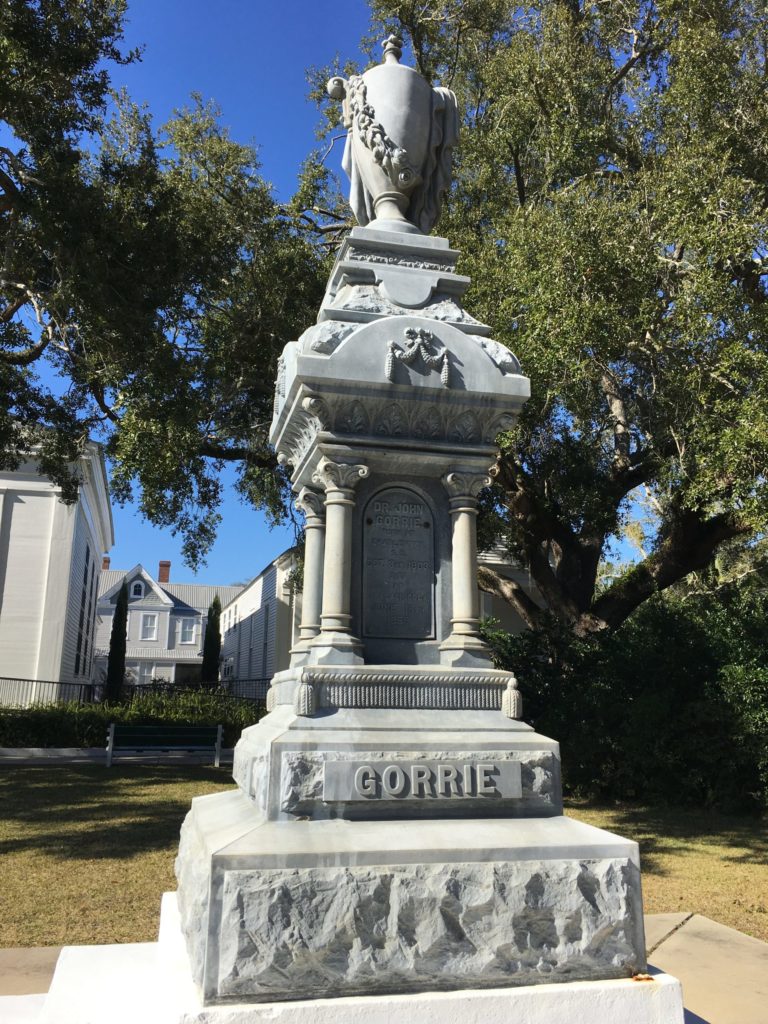
Blaine grilled most of the seafood to perfection! (some we kept for shrimp cocktail) So delicious!! At the end of this post, you’ll find the shrimp marinade recipe. We did nothing to the snapper, except rub some olive oil on all sides. While he was grilling, I made a veggie stir fry, adding a couple splashes of soy sauce.

After dinner, Blaine ran (probably almost, if not literally) out to get pictures of the sunset. There really wasn’t time for me to change clothes, get bundled up and walk over to the bay. Oh, who am I kidding? I was just too lazy. He brought back some beautiful pictures, and ice cold face and hands.
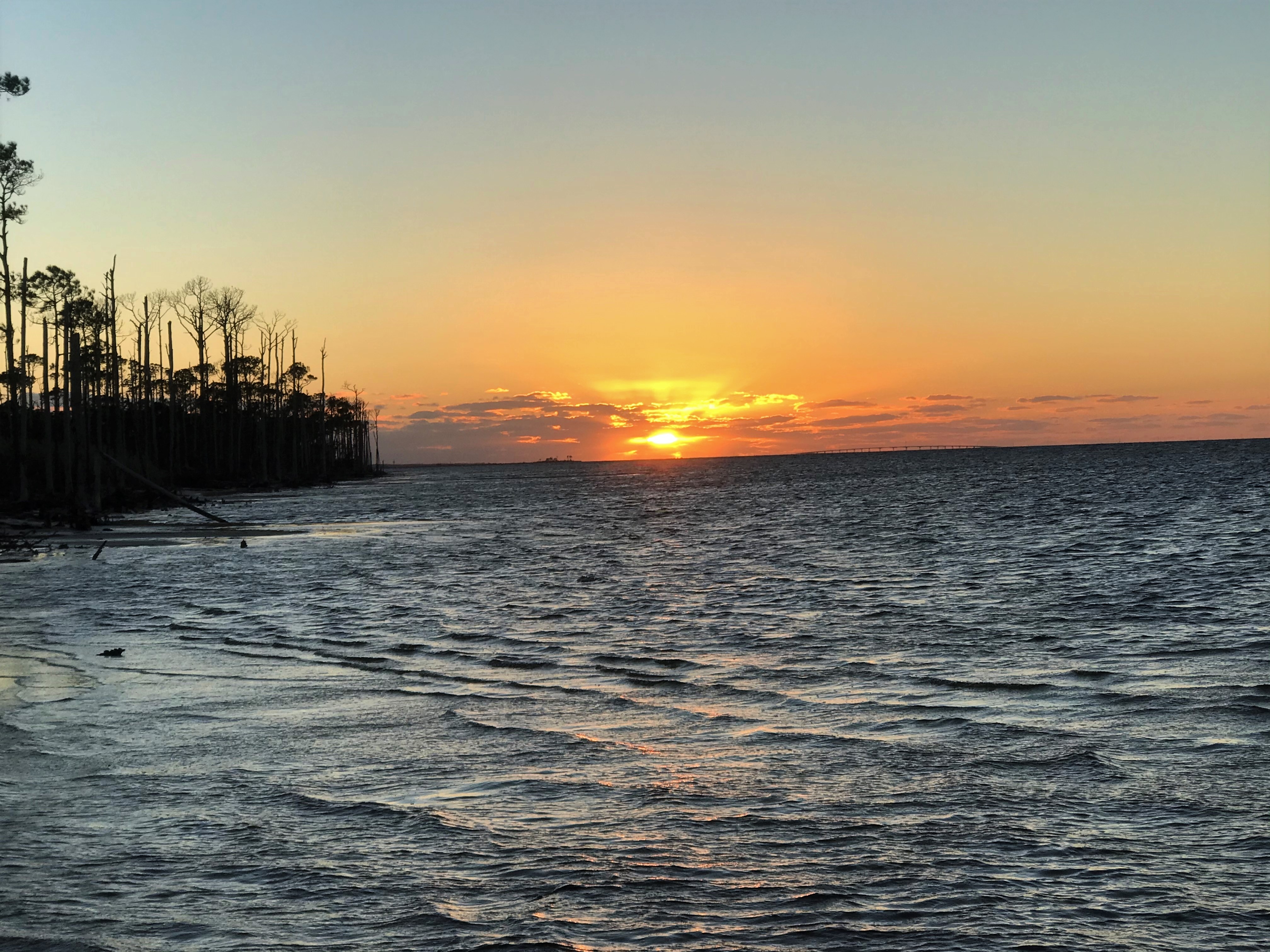
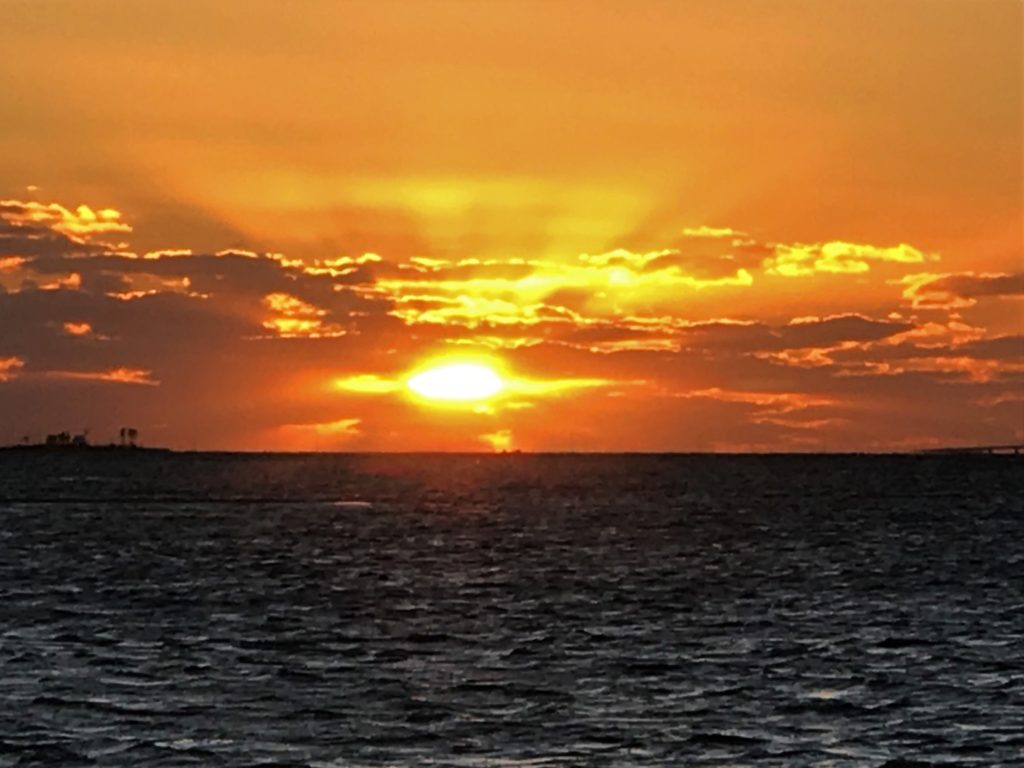
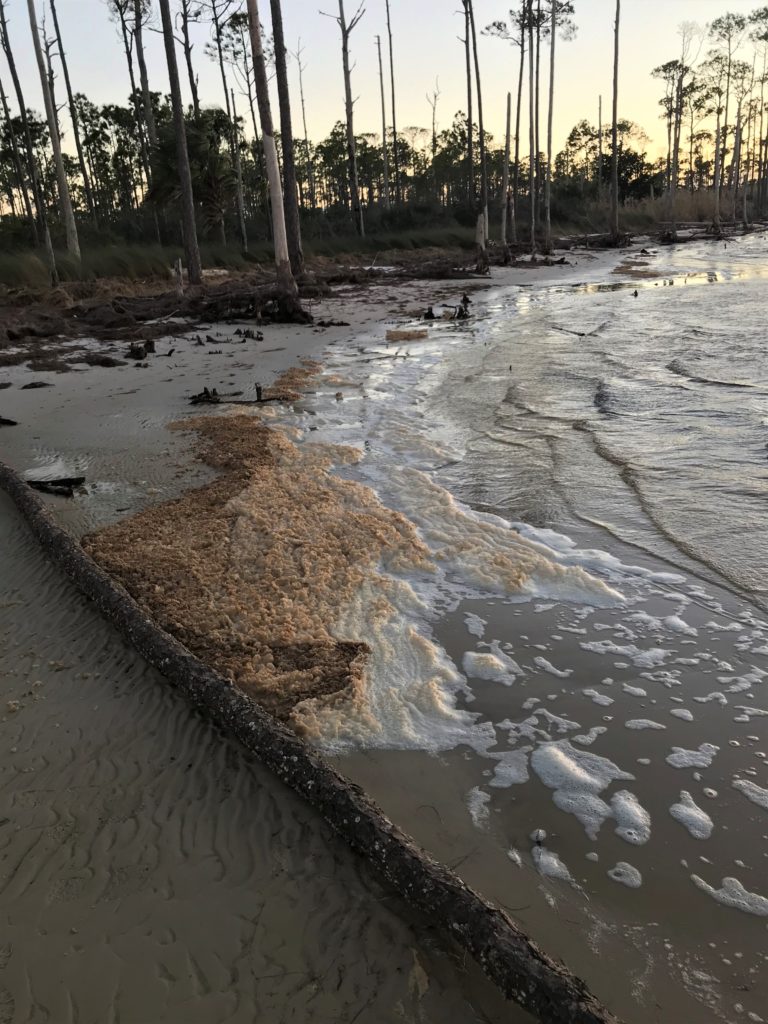
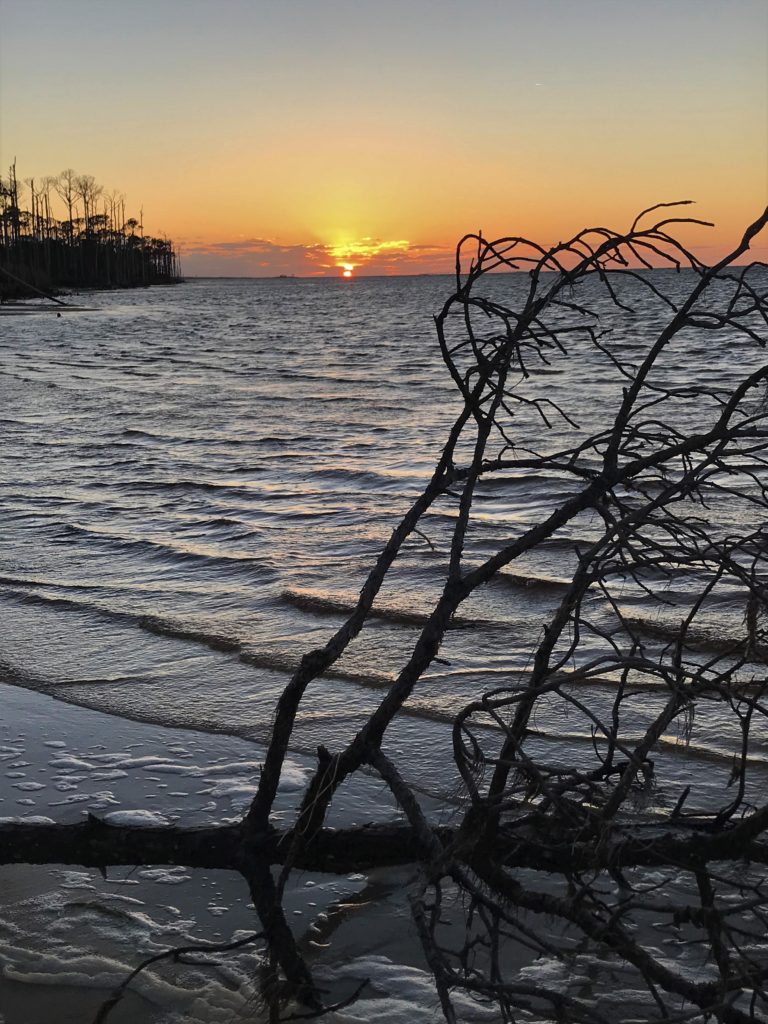
GRILLED SHRIMP
1# shrimp, peeled and deveined
¼ t. pepper
1/3 C. (half that, or 8 tsp.) olive oil
1 T. lemon juice
½ T. garlic
¼ t. red pepper flakes
½ T. fresh parsley (or dry equivalent)
Combine all ingredients in a zip-lock bag and marinate for 20 minutes. (more than 30 minutes makes shrimp start to break down and get soggy)
Grill for 3-5 minutes, or until done – pink and firm.

